
The Ordinary World: The First Step in the Hero’s Journey
by David Safford | 0 comments
Free Book Planning Course! Sign up for our 3-part book planning course and make your book writing easy . It expires soon, though, so don’t wait. Sign up here before the deadline!
From The Odyssey to Star Wars to Toy Story , the Hero's Journey is the foundation of millennia of storytelling. But before any hero can embark on their journey, they must start in the ordinary world.
How can you leverage this world and the hero's journey in your own writing?
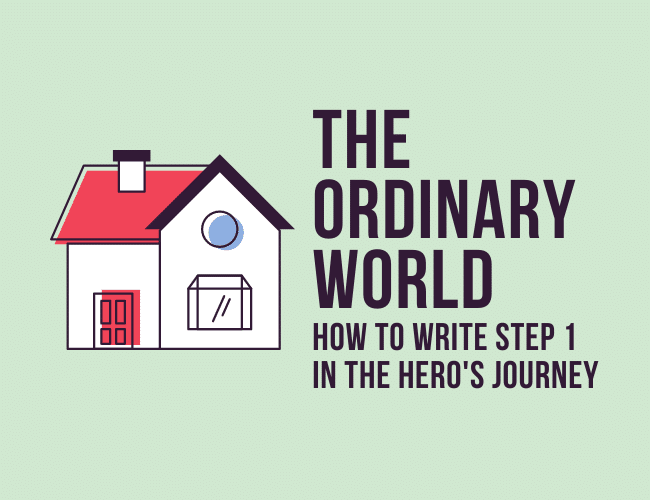
In storytelling, the hero's journey has to do with the stages of the hero as researched by Joseph Campbell and Christopher Vogler. Decades ago, these two storytelling experts identified several common trends that appear in great works from every generation and every culture.
One of those trends is structure.
Thankfully this structure has a proven track record of success. This successful record is so long, in fact, that we don't know when it started.
And it all begins with a person living an ordinary life.
What Is the Hero's Journey?
The Hero's Journey is a timeless combination of characters, events, and symbols frequently structured as a sequence of twelve steps. It is a storytelling structure that anyone can study and utilize to tell a story that readers will love.
You can learn all about the twelve steps that make up the universal structure of great stories in this article . Today, I'd like to take you even further into the first of those steps.
Let's take a look at the beginning: The Ordinary World.
Hero's Journey Step #1: Start Ordinary
We have Hollywood screenwriter and executive Christopher Vogler to thank for our condensed version of the Hero's Journey. If you're curious, his most notable credit is a film that makes explicit use of the Hero's Journey: The Lion King.
In Vogler's simplification of Campbell's theory, there are twelve steps to the Hero's Journey (I cover each one in-depth in a detailed Hero's Journey blog series, this article being one of those special articles).
The first step of the Hero's Journey involves establishing your hero's day-to-day ordinary life, all so it can be disrupted by the impending Inciting Incident. This is the Ordinary World.
This is when you establish the hero's day-to-day life, all so it can be disrupted by the impending Inciting Incident. Tweet this
David Safford
You deserve a great book. That's why David Safford writes adventure stories that you won't be able to put down. Read his latest story at his website. David is a Language Arts teacher, novelist, blogger, hiker, Legend of Zelda fanatic, puzzle-doer, husband, and father of two awesome children.

Trackbacks/Pingbacks
- Hero’s Journey: How to Write the Call to Adventure and Refusal of the Call - […] weeks ago we explored the beginning of every great story, Step #1: An Ordinary World with an ordinary, relatable…
- The Hero's Journey: The Key to Writing Your Hero Meeting the Mentor - […] the start of our Hero’s Journey series? Start here with Step 1: the Ordinary World and Steps 2 and…
- The Hero's Journey: How to Write the Crossing the Threshold Scene - […] Hero’s Journey story begins humbly in the protagonist’s “Ordinary World,” where corruption lurks within, or danger attacks from beyond.…
- The Hero’s Journey: How to Write the Crossing the Threshold Scene - […] Hero’s Journey story begins humbly in the protagonist’s “Ordinary World,” where corruption lurks within, or danger attacks from beyond.…
- The Hero's Journey: How to Fill Your Story With Trials, Allies, and Enemies - […] means your hero has started humbly (Ordinary World), experienced a Call to Adventure, Refused that call somehow, and found…
- The Hero's Journey: How to Outline the Approach and the Ordeal - […] a quick refresher, your hero starts humbly (Ordinary World), experiences a Call to Adventure, Refuses that call somehow, and finds…
- The Hero's Journey: How to Write the Climax of Your Story - […] hero will always begin in some sort of Ordinary World, a place where no one expects much of […]
- The Hero’s Journey: How to Write the Climax of Your Story – Books, Literature & Writing - […] hero will always begin in some sort of Ordinary World, a place where no one expects much of anyone.…
- How to Write the Climax of Your Story – Lederto.com - […] hero will always begin in some sort of Ordinary World, a place where no one expects much of […]
- The Hero's Journey: How to Build Suspense With a Fake-Out Ending - […] hero will always begin in some sort of Ordinary World, a place where no one expects much of […]
- The Hero's Journey: The Universal Structure of Great Stories : The Write Practice - […] hero will always begin in some sort of Ordinary World, a place where no one expects much of […]
- The Hero's Journey: How to Write the Resurrection - […] hero will always begin in some sort of Ordinary World, a place where no one expects much of […]
- The Hero's Journey: How to Write the Return With the Elixir - […] hero will always begin in some sort of Ordinary World, a place where no one expects much of […]
- The Hero’s Journey: How to Write the Return With the Elixir and Master the Perfect Ending – Books, Literature & Writing - […] hero will always begin in some sort of Ordinary World, a place where no one expects much of anyone. Then…
- The Perfect Hero’s Journey Example: Star Wars – Lederto.com Blog - […] Ordinary World: Luke lives in Tatooine but doesn’t like it. Like all Heroes, his eyes are drawn to the…
- The Perfect Hero’s Journey Example: Star Wars - Your Sunglasses Store - […] Ordinary World: Luke lives in Tatooine but doesn’t like it. Like all Heroes, his eyes are drawn to the…
Submit a Comment Cancel reply
Your email address will not be published. Required fields are marked *
Submit Comment
Join over 450,000 readers who are saying YES to practice. You’ll also get a free copy of our eBook 14 Prompts :
Popular Resources
Book Writing Tips & Guides Creativity & Inspiration Tips Writing Prompts Grammar & Vocab Resources Best Book Writing Software ProWritingAid Review Writing Teacher Resources Publisher Rocket Review Scrivener Review Gifts for Writers
Books By Our Writers

You've got it! Just us where to send your guide.
Enter your email to get our free 10-step guide to becoming a writer.
You've got it! Just us where to send your book.
Enter your first name and email to get our free book, 14 Prompts.
Want to Get Published?
Enter your email to get our free interactive checklist to writing and publishing a book.
- Story Writing Guides
12 Hero’s Journey Stages Explained (+ Free Templates)
From zero to hero, the hero’s journey is a popular character development arc used in many stories. In today’s post, we will explain the 12 hero’s journey stages, along with the simple example of Cinderella.
The Hero’s Journey was originally formulated by American writer Joseph Campbell to describe the typical character arc of many classic stories, particularly in the context of mythology and folklore. The original hero’s journey contained 17 steps. Although the hero’s journey has been adapted since then for use in modern fiction, the concept is not limited to literature. It can be applied to any story, video game, film or even music that features an archetypal hero who undergoes a transformation. Common examples of the hero’s journey in popular works include Star Wars, Lord of the Rings, The Hunger Games and Harry Potter and the Philosopher’s Stone.
- What is the hero's journey?
Stage 1: The Ordinary World
Stage 2: call of adventure, stage 3: refusal of the call, stage 4: meeting the mentor, stage 5: crossing the threshold, stage 6: tests, allies, enemies, stage 7: the approach, stage 8: the ordeal, stage 9: reward, stage 10: the road back, stage 11: resurrection, stage 12: return with the elixir, cinderella example, campbell’s 17-step journey, leeming’s 8-step journey, cousineau’s 8-step journey.
- Free Hero's Journey Templates
What is the hero’s journey?
The hero’s journey, also known as the monomyth, is a character arc used in many stories. The idea behind it is that heroes undergo a journey that leads them to find their true selves. This is often represented in a series of stages. There are typically 12 stages to the hero’s journey. Each stage represents a change in the hero’s mindset or attitude, which is triggered by an external or internal event. These events cause the hero to overcome a challenge, reach a threshold, and then return to a normal life.
The hero’s journey is a powerful tool for understanding your characters. It can help you decide who they are, what they want, where they came from, and how they will change over time. It can be used to
- Understand the challenges your characters will face
- Understand how your characters react to those challenges
- Help develop your characters’ traits and relationships

In this post, we will explain each stage of the hero’s journey, using the example of Cinderella.
You might also be interested in our post on the story mountain or this guide on how to outline a book .
12 Hero’s Journey Stages
The archetypal hero’s journey contains 12 stages and was created by Christopher Vogler. These steps take your main character through an epic struggle that leads to their ultimate triumph or demise. While these steps may seem formulaic at first glance, they actually form a very flexible structure. The hero’s journey is about transformation, not perfection.
Your hero starts out in the ordinary world. He or she is just like every other person in their environment, doing things that are normal for them and experiencing the same struggles and challenges as everyone else. In the ordinary world, the hero feels stuck and confused, so he or she goes on a quest to find a way out of this predicament.
Example: Cinderella’s father passes away and she is now stuck doing chores and taking abuse from her stepsisters and stepmother.
The hero gets his or her first taste of adventure when the call comes. This could be in the form of an encounter with a stranger or someone they know who encourages them to take a leap of faith. This encounter is typically an accident, a series of coincidences that put the hero in the right place at the right time.
Example: An invite arrives inviting the family to a royal ball where the Prince will choose a wife.
Some people will refuse to leave their safe surroundings and live by their own rules. The hero has to overcome the negative influences in order to hear the call again. They also have to deal with any personal doubts that arise from thinking too much about the potential dangers involved in the quest. It is common for the hero to deny their own abilities in this stage and to lack confidence in themselves.
Example: Cinderella accepts the call by making her own dress for the ball. However, her stepmother refuses the call for her by not letting her go to the ball. And her step-sisters ruin her dress, so she can not go.
After hearing the call, the hero begins a relationship with a mentor who helps them learn about themselves and the world. In some cases, the mentor may be someone the hero already knows. The mentor is usually someone who is well-versed in the knowledge that the hero needs to acquire, but who does not judge the hero for their lack of experience.
Example: Cinderella meets her fairy godmother who equips her with everything she needs for the ball, including a dress and a carriage.
The hero leaves their old life behind and enters the unfamiliar new world. The crossing of the threshold symbolises leaving their old self behind and becoming a new person. Sometimes this can include learning a new skill or changing their physical appearance. It can also include a time of wandering, which is an essential part of the hero’s journey.
Example: Cinderella hops into the carriage and heads off to the ball. She has transformed from a servant into an elegant young lady.
As the hero goes on this journey, they will meet both allies (people who help the hero) and enemies (people who try to stop the hero). There will also be tests, where the hero is tempted to quit, turn back, or become discouraged. The hero must be persistent and resilient to overcome challenges.
Example: At the ball, Cinderella meets the prince, and even see’s her stepmother and stepsister. She dances with Prince all night long making her step-sisters extremely jealous.
The hero now reaches the destination of their journey, in some cases, this is a literal location, such as a cave or castle. It could also be metaphorical, such as the hero having an internal conflict or having to make a difficult decision. In either case, the hero has to confront their deepest fears in this stage with bravery. In some ways, this stage can mark the end of the hero’s journey because the hero must now face their darkest fears and bring them under control. If they do not do this, the hero could be defeated in the final battle and will fail the story.
Example: Cinderella is having a great time at the ball and nearly forgets about the midnight rule. As she runs away in a hurry, her glass slipper falls off outside the palace.
The hero has made it to the final challenge of their journey and now must face all odds and defeat their greatest adversary. Consider this the climax of the story. This could be in the form of a physical battle, a moral dilemma or even an emotional challenge. The hero will look to their allies or mentor for further support and guidance in this ordeal. Whatever happens in this stage could change the rest of the story, either for good or bad.
Example: Prince Charming looks all over the kingdom for the mysterious girl he met at the ball. He finally visits Cinderella’s house and tries the slippers on the step-sisters. The prince is about to leave and then he sees Cinderella in the corner cleaning.
When the hero has defeated the most powerful and dangerous of adversaries, they will receive their reward. This reward could be an object, a new relationship or even a new piece of knowledge. The reward, which typically comes as a result of the hero’s perseverance and hard work, signifies the end of their journey. Given that the hero has accomplished their goal and served their purpose, it is a time of great success and accomplishment.
Example: The prince tries the glass slipper on Cinderella. The glass slipper fits Cinderella perfectly, and they fall in love.
The journey is now complete, and the hero is now heading back home. As the hero considers their journey and reflects on the lessons they learned along the way, the road back is sometimes marked by a sense of nostalgia or even regret. As they must find their way back to the normal world and reintegrate into their former life, the hero may encounter additional difficulties or tests along the way. It is common for the hero to run into previous adversaries or challenges they believed they had overcome.
Example: Cinderella and Prince Charming head back to the Prince’s castle to get married.
The hero has one final battle to face. At this stage, the hero might have to fight to the death against a much more powerful foe. The hero might even be confronted with their own mortality or their greatest fear. This is usually when the hero’s true personality emerges. This stage is normally symbolised by the hero rising from the dark place and fighting back. This dark place could again be a physical location, such as the underground or a dark cave. It might even be a dark, mental state, such as depression. As the hero rises again, they might change physically or even experience an emotional transformation.
Example: Cinderella is reborn as a princess. She once again feels the love and happiness that she felt when she was a little girl living with her father.
At the end of the story, the hero returns to the ordinary world and shares the knowledge gained in their journey with their fellow man. This can be done by imparting some form of wisdom, an object of great value or by bringing about a social revolution. In all cases, the hero returns changed and often wiser.
Example: Cinderella and Prince Charming live happily ever after. She uses her new role to punish her stepmother and stepsisters and to revitalise the kingdom.
We have used the example of Cinderella in Vogler’s hero’s journey model below:

Below we have briefly explained the other variations of the hero’s journey arc.
The very first hero’s journey arc was created by Joseph Campbell in 1949. It contained the following 17 steps:
- The Call to Adventure: The hero receives a call or a reason to go on a journey.
- Refusal of the Call: The hero does not accept the quest. They worry about their own abilities or fear the journey itself.
- Supernatural Aid: Someone (the mentor) comes to help the hero and they have supernatural powers, which are usually magical.
- The Crossing of the First Threshold: A symbolic boundary is crossed by the hero, often after a test.
- Belly of the Whale: The point where the hero has the most difficulty making it through.
- The Road of Trials: In this step, the hero will be tempted and tested by the outside world, with a number of negative experiences.
- The Meeting with the Goddess: The hero meets someone who can give them the knowledge, power or even items for the journey ahead.
- Woman as the Temptress: The hero is tempted to go back home or return to their old ways.
- Atonement with the Father: The hero has to make amends for any wrongdoings they may have done in the past. They need to confront whatever holds them back.
- Apotheosis: The hero gains some powerful knowledge or grows to a higher level.
- The Ultimate Boon: The ultimate boon is the reward for completing all the trials of the quest. The hero achieves their ultimate goal and feels powerful.
- Refusal of the Return: After collecting their reward, the hero refuses to return to normal life. They want to continue living like gods.
- The Magic Flight: The hero escapes with the reward in hand.
- Rescue from Without: The hero has been hurt and needs help from their allies or guides.
- The Crossing of the Return Threshold: The hero must come back and learn to integrate with the ordinary world once again.
- Master of the Two Worlds: The hero shares their wisdom or gifts with the ordinary world. Learning to live in both worlds.
- Freedom to Live: The hero accepts the new version of themselves and lives happily without fear.
David Adams Leeming later adapted the hero’s journey based on his research of legendary heroes found in mythology. He noted the following steps as a pattern that all heroes in stories follow:
- Miraculous conception and birth: This is the first trauma that the hero has to deal with. The Hero is often an orphan or abandoned child and therefore faces many hardships early on in life.
- Initiation of the hero-child: The child faces their first major challenge. At this point, the challenge is normally won with assistance from someone else.
- Withdrawal from family or community: The hero runs away and is tempted by negative forces.
- Trial and quest: A quest finds the hero giving them an opportunity to prove themselves.
- Death: The hero fails and is left near death or actually does die.
- Descent into the underworld: The hero rises again from death or their near-death experience.
- Resurrection and rebirth: The hero learns from the errors of their way and is reborn into a better, wiser being.
- Ascension, apotheosis, and atonement: The hero gains some powerful knowledge or grows to a higher level (sometimes a god-like level).
In 1990, Phil Cousineau further adapted the hero’s journey by simplifying the steps from Campbell’s model and rearranging them slightly to suit his own findings of heroes in literature. Again Cousineau’s hero’s journey included 8 steps:
- The call to adventure: The hero must have a reason to go on an adventure.
- The road of trials: The hero undergoes a number of tests that help them to transform.
- The vision quest: Through the quest, the hero learns the errors of their ways and has a realisation of something.
- The meeting with the goddess: To help the hero someone helps them by giving them some knowledge, power or even items for the journey ahead.
- The boon: This is the reward for completing the journey.
- The magic flight: The hero must escape, as the reward is attached to something terrible.
- The return threshold: The hero must learn to live back in the ordinary world.
- The master of two worlds: The hero shares their knowledge with the ordinary world and learns to live in both worlds.
As you can see, every version of the hero’s journey is about the main character showing great levels of transformation. Their journey may start and end at the same location, but they have personally evolved as a character in your story. Once a weakling, they now possess the knowledge and skill set to protect their world if needed.
Free Hero’s Journey Templates
Use the free Hero’s journey templates below to practice the skills you learned in this guide! You can either draw or write notes in each of the scene boxes. Once the template is complete, you will have a better idea of how your main character or the hero of your story develops over time:
The storyboard template below is a great way to develop your main character and organise your story:

Did you find this guide on the hero’s journey stages useful? Let us know in the comments below.

Marty the wizard is the master of Imagine Forest. When he's not reading a ton of books or writing some of his own tales, he loves to be surrounded by the magical creatures that live in Imagine Forest. While living in his tree house he has devoted his time to helping children around the world with their writing skills and creativity.
Related Posts
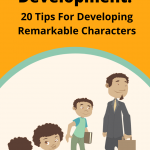
Comments loading...
TRY OUR FREE APP
Write your book in Reedsy Studio. Try the beloved writing app for free today.
Craft your masterpiece in Reedsy Studio
Plan, write, edit, and format your book in our free app made for authors.

Last updated on Aug 10, 2023
The Hero's Journey: 12 Steps to a Classic Story Structure
The Hero's Journey is a timeless story structure which follows a protagonist on an unforeseen quest, where they face challenges, gain insights, and return home transformed. From Theseus and the Minotaur to The Lion King , so many narratives follow this pattern that it’s become ingrained into our cultural DNA.
In this post, we'll show you how to make this classic plot structure work for you — and if you’re pressed for time, download our cheat sheet below for everything you need to know.
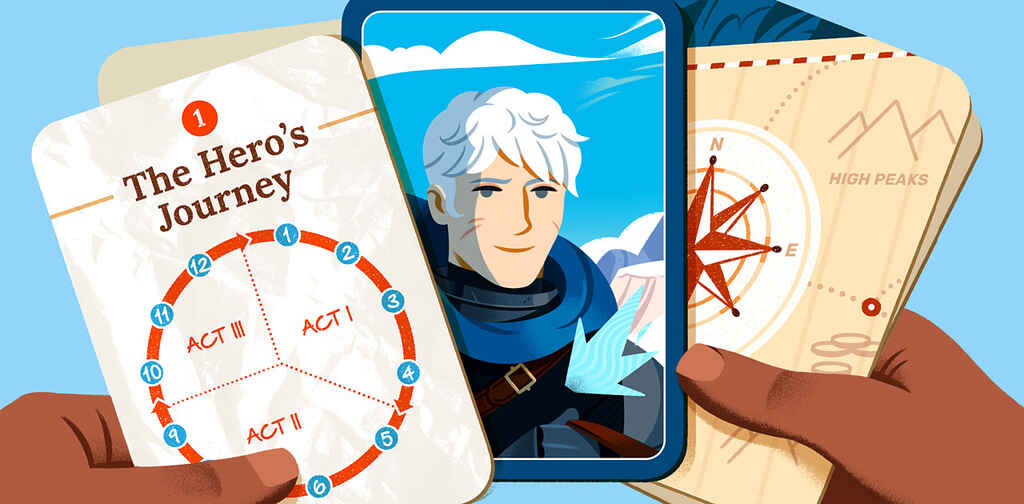
FREE RESOURCE
Hero's Journey Template
Plot your character's journey with our step-by-step template.
What is the Hero’s Journey?
The Hero's Journey, also known as the monomyth, is a story structure where a hero goes on a quest or adventure to achieve a goal, and has to overcome obstacles and fears, before ultimately returning home transformed.
This narrative arc has been present in various forms across cultures for centuries, if not longer, but gained popularity through Joseph Campbell's mythology book, The Hero with a Thousand Faces . While Campbell identified 17 story beats in his monomyth definition, this post will concentrate on a 12-step framework popularized in 2007 by screenwriter Christopher Vogler in his book The Writer’s Journey .
The 12 Steps of the Hero’s Journey

The Hero's Journey is a model for both plot points and character development : as the Hero traverses the world, they'll undergo inner and outer transformation at each stage of the journey. The 12 steps of the hero's journey are:
- The Ordinary World. We meet our hero.
- Call to Adventure. Will they meet the challenge?
- Refusal of the Call. They resist the adventure.
- Meeting the Mentor. A teacher arrives.
- Crossing the First Threshold. The hero leaves their comfort zone.
- Tests, Allies, Enemies. Making friends and facing roadblocks.
- Approach to the Inmost Cave. Getting closer to our goal.
- Ordeal. The hero’s biggest test yet!
- Reward (Seizing the Sword). Light at the end of the tunnel
- The Road Back. We aren’t safe yet.
- Resurrection. The final hurdle is reached.
- Return with the Elixir. The hero heads home, triumphant.
Believe it or not, this story structure also applies across mediums and genres (and also works when your protagonist is an anti-hero! ). Let's dive into it.
1. Ordinary World
In which we meet our Hero.
The journey has yet to start. Before our Hero discovers a strange new world, we must first understand the status quo: their ordinary, mundane reality.
It’s up to this opening leg to set the stage, introducing the Hero to readers. Importantly, it lets readers identify with the Hero as a “normal” person in a “normal” setting, before the journey begins.
2. Call to Adventure
In which an adventure starts.
The call to adventure is all about booting the Hero out of their comfort zone. In this stage, they are generally confronted with a problem or challenge they can't ignore. This catalyst can take many forms, as Campbell points out in Hero with a Thousand Faces . The Hero can, for instance:
- Decide to go forth of their own volition;
- Theseus upon arriving in Athens.
- Be sent abroad by a benign or malignant agent;
- Odysseus setting off on his ship in The Odyssey .
- Stumble upon the adventure as a result of a mere blunder;
- Dorothy when she’s swept up in a tornado in The Wizard of Oz .
- Be casually strolling when some passing phenomenon catches the wandering eye and lures one away from the frequented paths of man.
- Elliot in E.T. upon discovering a lost alien in the tool shed.
The stakes of the adventure and the Hero's goals become clear. The only question: will he rise to the challenge?

3. Refusal of the Call
In which the Hero digs in their feet.
Great, so the Hero’s received their summons. Now they’re all set to be whisked off to defeat evil, right?
Not so fast. The Hero might first refuse the call to action. It’s risky and there are perils — like spiders, trolls, or perhaps a creepy uncle waiting back at Pride Rock . It’s enough to give anyone pause.
In Star Wars , for instance, Luke Skywalker initially refuses to join Obi-Wan on his mission to rescue the princess. It’s only when he discovers that his aunt and uncle have been killed by stormtroopers that he changes his mind.
4. Meeting the Mentor
In which the Hero acquires a personal trainer.
The Hero's decided to go on the adventure — but they’re not ready to spread their wings yet. They're much too inexperienced at this point and we don't want them to do a fabulous belly-flop off the cliff.
Enter the mentor: someone who helps the Hero, so that they don't make a total fool of themselves (or get themselves killed). The mentor provides practical training, profound wisdom, a kick up the posterior, or something abstract like grit and self-confidence.

Wise old wizards seem to like being mentors. But mentors take many forms, from witches to hermits and suburban karate instructors. They might literally give weapons to prepare for the trials ahead, like Q in the James Bond series. Or perhaps the mentor is an object, such as a map. In all cases, they prepare the Hero for the next step.

GET ACCOUNTABILITY
Meet writing coaches on Reedsy
Industry insiders can help you hone your craft, finish your draft, and get published.
5. Crossing the First Threshold
In which the Hero enters the other world in earnest.
Now the Hero is ready — and committed — to the journey. This marks the end of the Departure stage and is when the adventure really kicks into the next gear. As Vogler writes: “This is the moment that the balloon goes up, the ship sails, the romance begins, the wagon gets rolling.”
From this point on, there’s no turning back.
Like our Hero, you should think of this stage as a checkpoint for your story. Pause and re-assess your bearings before you continue into unfamiliar territory. Have you:
- Launched the central conflict? If not, here’s a post on types of conflict to help you out.
- Established the theme of your book? If not, check out this post that’s all about creating theme and motifs .
- Made headway into your character development? If not, this character profile template may be useful:

Reedsy’s Character Profile Template
A story is only as strong as its characters. Fill this out to develop yours.
6. Tests, Allies, Enemies
In which the Hero faces new challenges and gets a squad.
When we step into the Special World, we notice a definite shift. The Hero might be discombobulated by this unfamiliar reality and its new rules. This is generally one of the longest stages in the story , as our protagonist gets to grips with this new world.
This makes a prime hunting ground for the series of tests to pass! Luckily, there are many ways for the Hero to get into trouble:
- In Jumanji: Welcome to the Jungle , Spencer, Bethany, “Fridge,” and Martha get off to a bad start when they bump into a herd of bloodthirsty hippos.
- In his first few months at Hogwarts, Harry Potter manages to fight a troll, almost fall from a broomstick and die, and get horribly lost in the Forbidden Forest.
- Marlin and Dory encounter three “reformed” sharks, get shocked by jellyfish, and are swallowed by a blue whale en route to finding Nemo.

This stage often expands the cast of characters. Once the protagonist is in the Special World, he will meet allies and enemies — or foes that turn out to be friends and vice versa. He will learn a new set of rules from them. Saloons and seedy bars are popular places for these transactions, as Vogler points out (so long as the Hero survives them).
7. Approach to the Inmost Cave
In which the Hero gets closer to his goal.
This isn’t a physical cave. Instead, the “inmost cave” refers to the most dangerous spot in the other realm — whether that’s the villain’s chambers, the lair of the fearsome dragon, or the Death Star. Almost always, it is where the ultimate goal of the quest is located.
Note that the protagonist hasn’t entered the Inmost Cave just yet. This stage is all about the approach to it. It covers all the prep work that's needed in order to defeat the villain.
In which the Hero faces his biggest test of all thus far.
Of all the tests the Hero has faced, none have made them hit rock bottom — until now. Vogler describes this phase as a “black moment.” Campbell refers to it as the “belly of the whale.” Both indicate some grim news for the Hero.
The protagonist must now confront their greatest fear. If they survive it, they will emerge transformed. This is a critical moment in the story, as Vogler explains that it will “inform every decision that the Hero makes from this point forward.”
The Ordeal is sometimes not the climax of the story. There’s more to come. But you can think of it as the main event of the second act — the one in which the Hero actually earns the title of “Hero.”
9. Reward (Seizing the Sword)
In which the Hero sees light at the end of the tunnel.
Our Hero’s been through a lot. However, the fruits of their labor are now at hand — if they can just reach out and grab them! The “reward” is the object or knowledge the Hero has fought throughout the entire journey to hold.
Once the protagonist has it in their possession, it generally has greater ramifications for the story. Vogler offers a few examples of it in action:
- Luke rescues Princess Leia and captures the plans of the Death Star — keys to defeating Darth Vader.
- Dorothy escapes from the Wicked Witch’s castle with the broomstick and the ruby slippers — keys to getting back home.

10. The Road Back
In which the light at the end of the tunnel might be a little further than the Hero thought.
The story's not over just yet, as this phase marks the beginning of Act Three. Now that he's seized the reward, the Hero tries to return to the Ordinary World, but more dangers (inconveniently) arise on the road back from the Inmost Cave.
More precisely, the Hero must deal with the consequences and aftermath of the previous act: the dragon, enraged by the Hero who’s just stolen a treasure from under his nose, starts the hunt. Or perhaps the opposing army gathers to pursue the Hero across a crowded battlefield. All further obstacles for the Hero, who must face them down before they can return home.
11. Resurrection
In which the last test is met.
Here is the true climax of the story. Everything that happened prior to this stage culminates in a crowning test for the Hero, as the Dark Side gets one last chance to triumph over the Hero.
Vogler refers to this as a “final exam” for the Hero — they must be “tested once more to see if they have really learned the lessons of the Ordeal.” It’s in this Final Battle that the protagonist goes through one more “resurrection.” As a result, this is where you’ll get most of your miraculous near-death escapes, à la James Bond's dashing deliverances. If the Hero survives, they can start looking forward to a sweet ending.
12. Return with the Elixir
In which our Hero has a triumphant homecoming.
Finally, the Hero gets to return home. However, they go back a different person than when they started out: they’ve grown and matured as a result of the journey they’ve taken.
But we’ve got to see them bring home the bacon, right? That’s why the protagonist must return with the “Elixir,” or the prize won during the journey, whether that’s an object or knowledge and insight gained.
Of course, it’s possible for a story to end on an Elixir-less note — but then the Hero would be doomed to repeat the entire adventure.
Examples of The Hero’s Journey in Action
To better understand this story template beyond the typical sword-and-sorcery genre, let's analyze three examples, from both screenplay and literature, and examine how they implement each of the twelve steps.
The 1976 film Rocky is acclaimed as one of the most iconic sports films because of Stallone’s performance and the heroic journey his character embarks on.

- Ordinary World. Rocky Balboa is a mediocre boxer and loan collector — just doing his best to live day-to-day in a poor part of Philadelphia.
- Call to Adventure. Heavyweight champ Apollo Creed decides to make a big fight interesting by giving a no-name loser a chance to challenge him. That loser: Rocky Balboa.
- Refusal of the Call. Rocky says, “Thanks, but no thanks,” given that he has no trainer and is incredibly out of shape.
- Meeting the Mentor. In steps former boxer Mickey “Mighty Mick” Goldmill, who sees potential in Rocky and starts training him physically and mentally for the fight.
- Crossing the First Threshold. Rocky crosses the threshold of no return when he accepts the fight on live TV, and 一 in parallel 一 when he crosses the threshold into his love interest Adrian’s house and asks her out on a date.
- Tests, Allies, Enemies. Rocky continues to try and win Adrian over and maintains a dubious friendship with her brother, Paulie, who provides him with raw meat to train with.
- Approach to the Inmost Cave. The Inmost Cave in Rocky is Rocky’s own mind. He fears that he’ll never amount to anything — something that he reveals when he butts heads with his trainer, Mickey, in his apartment.
- Ordeal. The start of the training montage marks the beginning of Rocky’s Ordeal. He pushes through it until he glimpses hope ahead while running up the museum steps.
- Reward (Seizing the Sword). Rocky's reward is the restoration of his self-belief, as he recognizes he can try to “go the distance” with Apollo Creed and prove he's more than "just another bum from the neighborhood."
- The Road Back. On New Year's Day, the fight takes place. Rocky capitalizes on Creed's overconfidence to start strong, yet Apollo makes a comeback, resulting in a balanced match.
- Resurrection. The fight inflicts multiple injuries and pushes both men to the brink of exhaustion, with Rocky being knocked down numerous times. But he consistently rises to his feet, enduring through 15 grueling rounds.
- Return with the Elixir. Rocky loses the fight — but it doesn’t matter. He’s won back his confidence and he’s got Adrian, who tells him that she loves him.
Moving outside of the ring, let’s see how this story structure holds on a completely different planet and with a character in complete isolation.
The Martian
In Andy Weir’s self-published bestseller (better known for its big screen adaptation) we follow astronaut Mark Watney as he endures the challenges of surviving on Mars and working out a way to get back home.

- The Ordinary World. Botanist Mark and other astronauts are on a mission on Mars to study the planet and gather samples. They live harmoniously in a structure known as "the Hab.”
- Call to Adventure. The mission is scrapped due to a violent dust storm. As they rush to launch, Mark is flung out of sight and the team believes him to be dead. He is, however, very much alive — stranded on Mars with no way of communicating with anyone back home.
- Refusal of the Call. With limited supplies and grim odds of survival, Mark concludes that he will likely perish on the desolate planet.
- Meeting the Mentor. Thanks to his resourcefulness and scientific knowledge he starts to figure out how to survive until the next Mars mission arrives.
- Crossing the First Threshold. Mark crosses the mental threshold of even trying to survive 一 he successfully creates a greenhouse to cultivate a potato crop, creating a food supply that will last long enough.
- Tests, Allies, Enemies. Loneliness and other difficulties test his spirit, pushing him to establish contact with Earth and the people at NASA, who devise a plan to help.
- Approach to the Inmost Cave. Mark faces starvation once again after an explosion destroys his potato crop.
- Ordeal. A NASA rocket destined to deliver supplies to Mark disintegrates after liftoff and all hope seems lost.
- Reward (Seizing the Sword). Mark’s efforts to survive are rewarded with a new possibility to leave the planet. His team 一 now aware that he’s alive 一 defies orders from NASA and heads back to Mars to rescue their comrade.
- The Road Back. Executing the new plan is immensely difficult 一 Mark has to travel far to locate the spaceship for his escape, and almost dies along the way.
- Resurrection. Mark is unable to get close enough to his teammates' ship but finds a way to propel himself in empty space towards them, and gets aboard safely.
- Return with the Elixir. Now a survival instructor for aspiring astronauts, Mark teaches students that space is indifferent and that survival hinges on solving one problem after another, as well as the importance of other people’s help.
Coming back to Earth, let’s now examine a heroine’s journey through the wilderness of the Pacific Crest Trail and her… humanity.
The memoir Wild narrates the three-month-long hiking adventure of Cheryl Strayed across the Pacific coast, as she grapples with her turbulent past and rediscovers her inner strength.

- The Ordinary World. Cheryl shares her strong bond with her mother who was her strength during a tough childhood with an abusive father.
- Call to Adventure. As her mother succumbs to lung cancer, Cheryl faces the heart-wrenching reality to confront life's challenges on her own.
- Refusal of the Call. Cheryl spirals down into a destructive path of substance abuse and infidelity, which leads to hit rock bottom with a divorce and unwanted pregnancy.
- Meeting the Mentor. Her best friend Lisa supports her during her darkest time. One day she notices the Pacific Trail guidebook, which gives her hope to find her way back to her inner strength.
- Crossing the First Threshold. She quits her job, sells her belongings, and visits her mother’s grave before traveling to Mojave, where the trek begins.
- Tests, Allies, Enemies. Cheryl is tested by her heavy bag, blisters, rattlesnakes, and exhaustion, but many strangers help her along the trail with a warm meal or hiking tips.
- Approach to the Inmost Cave. As Cheryl goes through particularly tough and snowy parts of the trail her emotional baggage starts to catch up with her.
- Ordeal. She inadvertently drops one of her shoes off a cliff, and the incident unearths the helplessness she's been evading since her mother's passing.
- Reward (Seizing the Sword). Cheryl soldiers on, trekking an impressive 50 miles in duct-taped sandals before finally securing a new pair of shoes. This small victory amplifies her self-confidence.
- The Road Back. On the last stretch, she battles thirst, sketchy hunters, and a storm, but more importantly, she revisits her most poignant and painful memories.
- Resurrection. Cheryl forgives herself for damaging her marriage and her sense of worth, owning up to her mistakes. A pivotal moment happens at Crater Lake, where she lets go of her frustration at her mother for passing away.
- Return with the Elixir. Cheryl reaches the Bridge of the Gods and completes the trail. She has found her inner strength and determination for life's next steps.
There are countless other stories that could align with this template, but it's not always the perfect fit. So, let's look into when authors should consider it or not.
When should writers use The Hero’s Journey?

The Hero’s Journey is just one way to outline a novel and dissect a plot. For more longstanding theories on the topic, you can go this way to read about the ever-popular Three-Act Structure or here to discover Dan Harmon's Story Circle and three more prevalent structures .
So when is it best to use the Hero’s Journey? There are a couple of circumstances which might make this a good choice.
When you need more specific story guidance than simple structures can offer
Simply put, the Hero’s Journey structure is far more detailed and closely defined than other story structure theories. If you want a fairly specific framework for your work than a thee-act structure, the Hero’s Journey can be a great place to start.
Of course, rules are made to be broken . There’s plenty of room to play within the confines of the Hero’s Journey, despite it appearing fairly prescriptive at first glance. Do you want to experiment with an abbreviated “Resurrection” stage, as J.K. Rowling did in Harry Potter and the Sorcerer’s Stone? Are you more interested in exploring the journey of an anti-hero? It’s all possible.
Once you understand the basics of this universal story structure, you can use and bend it in ways that disrupt reader expectations.
Need more help developing your book? Try this template on for size:
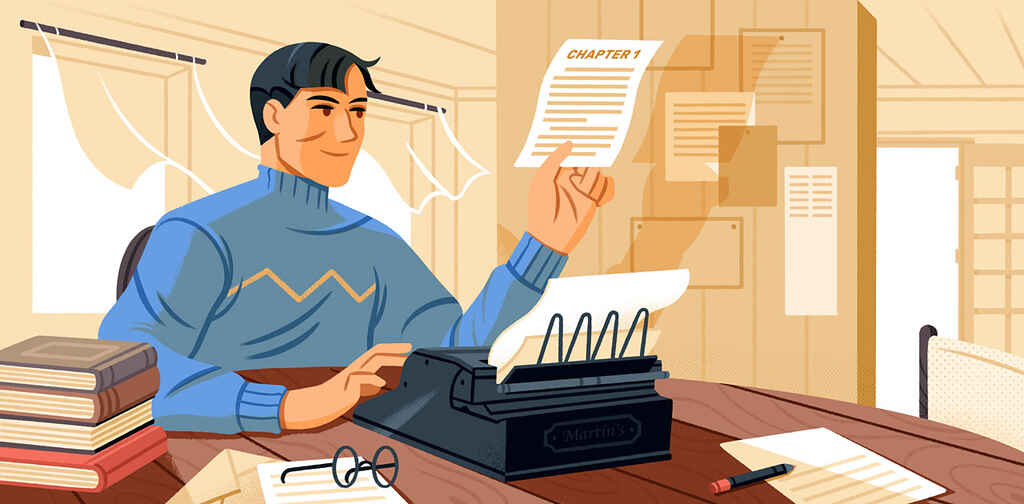
Get our Book Development Template
Use this template to go from a vague idea to a solid plan for a first draft.
When your focus is on a single protagonist
No matter how sprawling or epic the world you’re writing is, if your story is, at its core, focused on a single character’s journey, then this is a good story structure for you. It’s kind of in the name! If you’re dealing with an entire ensemble, the Hero’s Journey may not give you the scope to explore all of your characters’ plots and subplot — a broader three-act structure may give you more freedom to weave a greater number story threads.
Which story structure is right for you?
Take this quiz and we'll match your story to a structure in minutes!
Whether you're a reader or writer, we hope our guide has helped you understand this universal story arc. Want to know more about story structure? We explain 6 more in our guide — read on!
6 responses
PJ Reece says:
25/07/2018 – 19:41
Nice vid, good intro to story structure. Typically, though, the 'hero's journey' misses the all-important point of the Act II crisis. There, where the hero faces his/her/its existential crisis, they must DIE. The old character is largely destroyed -- which is the absolute pre-condition to 'waking up' to what must be done. It's not more clever thinking; it's not thinking at all. Its SEEING. So many writing texts miss this point. It's tantamount to a religions experience, and nobody grows up without it. STORY STRUCTURE TO DIE FOR examines this dramatic necessity.
↪️ C.T. Cheek replied:
13/11/2019 – 21:01
Okay, but wouldn't the Act II crisis find itself in the Ordeal? The Hero is tested and arguably looses his/her/its past-self for the new one. Typically, the Hero is not fully "reborn" until the Resurrection, in which they defeat the hypothetical dragon and overcome the conflict of the story. It's kind of this process of rebirth beginning in the earlier sections of the Hero's Journey and ending in the Resurrection and affirmed in the Return with the Elixir.
Lexi Mize says:
25/07/2018 – 22:33
Great article. Odd how one can take nearly every story and somewhat plug it into such a pattern.
Bailey Koch says:
11/06/2019 – 02:16
This was totally lit fam!!!!
↪️ Bailey Koch replied:
11/09/2019 – 03:46
where is my dad?
Frank says:
12/04/2020 – 12:40
Great article, thanks! :) But Vogler didn't expand Campbell's theory. Campbell had seventeen stages, not twelve.
Comments are currently closed.
Join a community of over 1 million authors
Reedsy is more than just a blog. Become a member today to discover how we can help you publish a beautiful book.
Bring your stories to life
Our free writing app lets you set writing goals and track your progress, so you can finally write that book!

1 million authors trust the professionals on Reedsy. Come meet them.
Enter your email or get started with a social account:
The Ordinary World in the Hero's Journey
From Christopher Vogler's "The Writer's Journey: Mythic Structure"
Moviepix / GettyImages
- Tips For Adult Students
- Getting Your Ged
:max_bytes(150000):strip_icc():format(webp)/Deb-Nov2015-5895870e3df78caebc88766f.jpg)
- B.A., English, St. Olaf College
The hero's journey begins with the hero in the ordinary world, going about ordinary life, except that something isn't quite right. What he does in the first scenes demonstrates a flaw of some kind, a lacking to be overcome, for either the hero or someone close to him or her.
The Ordinary World
According to Christopher Vogler, author of The Writer's Journey: Mythic Structure , we see the hero in his ordinary world so we recognize the difference when he enters the special world of the story. The ordinary world generally conjures a mood, image, or metaphor that suggests a theme and gives the reader a frame of reference for the rest of the story.
The mythological approach to story boils down to using metaphors or comparisons to convey the hero's feelings about life.
The ordinary world is sometimes set in a prologue and often strains credibility to prepare the audience for the special world, Vogler writes. An old rule in secret societies is that disorientation leads to suggestibility. It allows the reader to suspend disbelief.
Writers often foreshadow the special world by creating a microcosm of it in the ordinary world. (e.g., Dorothy’s ordinary life in the Wizard of Oz is depicted in black and white, the events mirroring what she is about to encounter in the technicolor special world.)
Vogler believes that every good story poses both an inner and an outer question for the hero that becomes apparent in the ordinary world. (e.g., Dorothy's outer problem is that Toto has dug up Miss Gulch's flower bed and everyone is too busy preparing for the storm to help her out. Her inner problem is that she has lost her parents and doesn’t feel "at home" anymore; she's incomplete and about to embark on a quest for completion.)
The Importance of the First Action
The hero’s first action usually illustrates his or her characteristic attitude and the future problems or solutions that will result. Stories invite the reader to experience an adventure through the hero's eyes, so the author generally strives to establish a strong bond of sympathy or common interest.
He or she does that by creating a way for the reader to identify with the hero's goals , drives, desires, and needs, which are usually universal. Most heroes are on a journey of completion of one kind or another. Readers abhor the vacuum created by a missing piece in a character, and so are willing to embark on the journey with him or her, according to Vogler.
Many authors show the hero unable to perform a simple task in the ordinary world. By the end of the story, he or she has learned, changed, and can accomplish the task with ease.
The ordinary world also provides backstory embedded in the action. The reader must work a little to figure it all out, like getting pieces of a puzzle one or two at a time. This, too, engages the reader.
While analyzing your hero's ordinary world, remember that much can be revealed by what characters don't say or do.
This article is part of our series on the hero's journey, starting with The Hero's Journey Introduction and The Archetypes of the Hero's Journey .
- The Hero's Journey: Crossing the Threshold
- The Reward and the Road Back
- The Approach to the Inmost Cave in the Hero's Journey
- An Introduction to The Hero's Journey
- The Hero's Journey: Refusing The Call to Adventure
- The Hero's Journey: Meeting with the Mentor
- The Resurrection and Return With the Elixir
- The Role of Archetypes in Literature
- The Ordeal in the Hero's Journey
- 'The Lost World,' Arthur Conan Doyle's Dinosaur Classic
- Foreshadowing in Narratives
- What Is Enjambment? Definition and Examples
- Ulysses (Odysseus)
- Conflict in Literature
- Analysis of The Bear Came Over the Mountain by Alice Munro
- Use a Concept Map for Your Literature Midterms and Finals
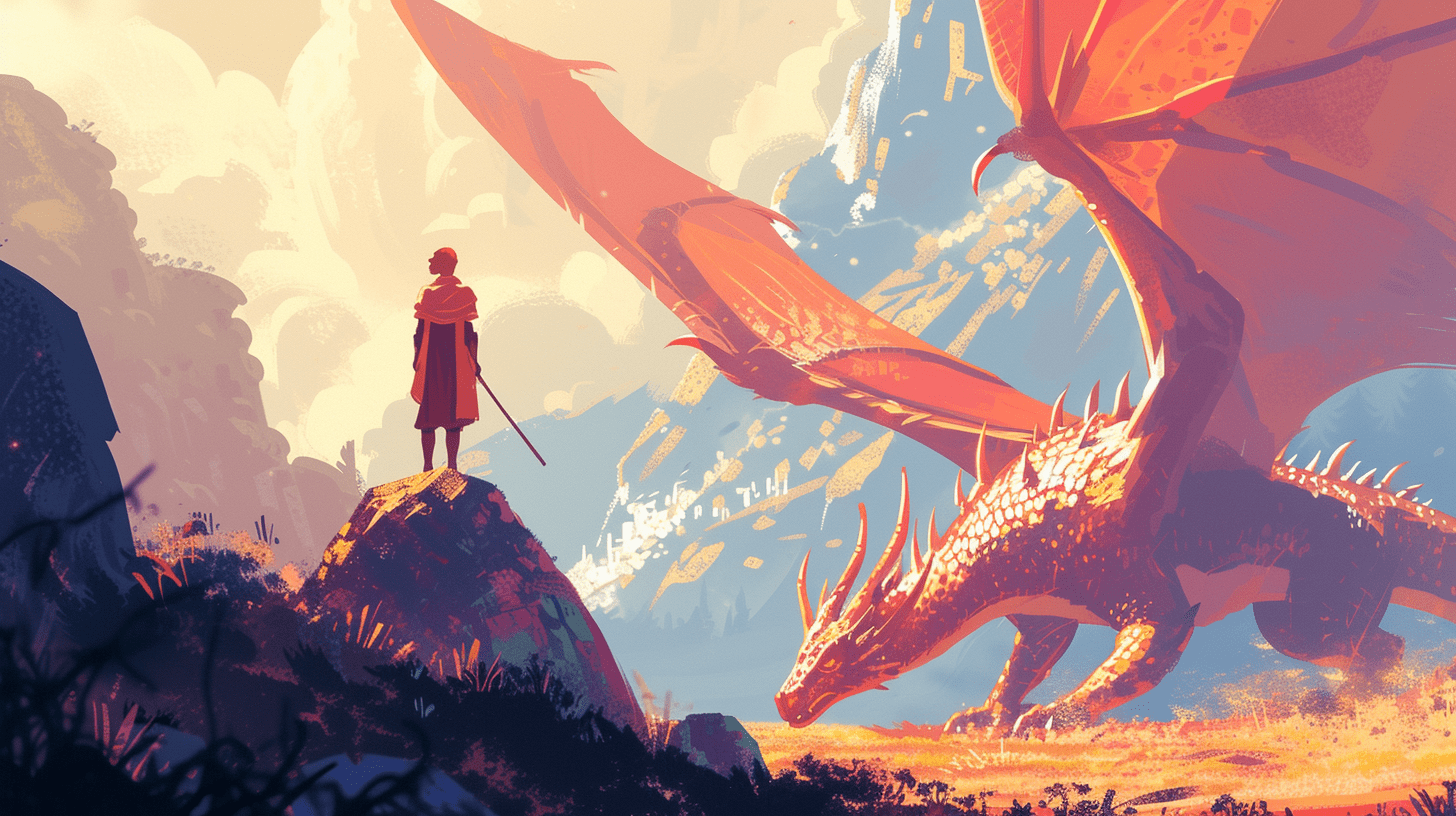
Mastering The Hero's Journey: A Comprehensive Guide To Storytelling Success
Table of Contents
Origins of the Hero's Journey
The three-act structure, the 12 stages of the hero's journey, key archetypes in the hero's journey, the inner and outer journey, applying the hero's journey to your story, adaptations and variations of the hero's journey, case studies: the hero's journey in popular fiction, common mistakes and how to avoid them, writing tips for crafting a compelling hero's journey, frequently asked questions, further reading.
The concept of the Hero's Journey can be traced back to the work of renowned mythologist Joseph Campbell . In his seminal book, The Hero with a Thousand Faces (1949), Campbell examined myths and stories from various cultures around the world and identified a common narrative pattern that he dubbed the "monomyth."
According to Campbell, the monomyth is a universal story template that transcends time, culture, and geography. It consists of a series of stages that a hero must go through in order to fulfill their destiny or complete their quest. Campbell drew inspiration for this concept from the works of prominent scholars such as Carl Jung , whose theories on archetypes and the collective unconscious greatly influenced his thinking.
Another significant influence on Campbell's work was James Frazer , who studied comparative mythology and religion in his groundbreaking book, The Golden Bough (1890). Frazer's work helped Campbell recognize the similarities between myths from different cultures and formulate the idea of a shared, underlying narrative structure.
In The Hero with a Thousand Faces , Campbell outlined the basic structure of the monomyth, which he divided into three main stages: Departure, Initiation, and Return. These stages encompass various sub-stages that the hero encounters on their journey, creating a blueprint for the Hero's Journey that can be applied to countless stories.
While Campbell's work focused primarily on myths and legends, the Hero's Journey has been widely adopted by writers and filmmakers in crafting their narratives. Some of the most successful books and movies, such as Star Wars and The Lord of the Rings , have followed the basic structure of the monomyth, proving the enduring appeal of this timeless narrative framework.
Over the years, the Hero's Journey has been refined and expanded upon by other scholars and writers, most notably Christopher Vogler , who adapted Campbell's ideas for use in modern storytelling in his book The Writer's Journey: Mythic Structure for Writers (1992). Vogler's work has made the Hero's Journey more accessible to contemporary writers, ensuring its continued relevance in the world of storytelling.
The Three-Act Structure is a widely-used storytelling model that divides a narrative into three distinct parts or "acts": Setup, Confrontation, and Resolution. This model has its roots in classical drama and has been adapted for use in modern storytelling, particularly in the realms of screenwriting and novel writing. The Three-Act Structure provides a framework for pacing and plot development, helping writers create a well-structured and engaging narrative.
Act One: Setup
The first act of a story serves to introduce the main characters, establish the setting, and provide important background information. During this act, the protagonist is typically confronted with an inciting incident that sets the story in motion and propels them into the main conflict. This act ends with a turning point or "plot point" that pushes the protagonist into the second act.
In the context of the Hero's Journey, Act One corresponds to the Departure stage, which includes elements such as the Call to Adventure, Refusal of the Call, and the Meeting with the Mentor. These events set the stage for the hero's transformation and the challenges they will face throughout their journey.
Act Two: Confrontation
The second act, often referred to as the "rising action," sees the protagonist facing a series of obstacles and challenges as they pursue their goal. This is the longest part of the story, as it delves into the hero's struggles, their growth, and their relationships with other characters. The second act also features a turning point or "midpoint" that raises the stakes and heightens the tension. This act concludes with another major plot point, often involving a crisis or setback for the protagonist, propelling them into the final act.
In the Hero's Journey, Act Two encompasses the Initiation stage, with events such as the Road of Trials, the Approach to the Inmost Cave, and the Ordeal. These challenges test the hero's mettle, forcing them to confront their fears, learn important lessons, and acquire the skills they need to succeed in their quest.
Act Three: Resolution
The third and final act of a story focuses on the resolution of the conflict and the protagonist's ultimate transformation. The climax of the story typically occurs near the beginning of this act, as the hero faces their final challenge or confrontation with the antagonist. After the climax, the story moves into the "falling action," where loose ends are tied up, and the consequences of the protagonist's actions are revealed. The story concludes with the "denouement," which provides closure and shows how the characters have been affected by the events of the story.
In the context of the Hero's Journey, Act Three corresponds to the Return stage, featuring events such as the Resurrection, the Atonement with the Father, and the Freedom to Live. These elements signify the hero's completion of their quest, their reconciliation with their past, and their newfound ability to live a more fulfilled and authentic life.
By following the Three-Act Structure, writers can effectively pace their stories and ensure that the narrative remains engaging and satisfying for their audience. When combined with the stages and elements of the Hero's Journey, this structure provides a powerful blueprint for crafting compelling and resonant tales.
While the Hero's Journey can be broken down into the Three-Act Structure, it is often further divided into 12 distinct stages that the hero must go through during their quest. These stages, as described by Joseph Campbell and adapted by Christopher Vogler, provide a more detailed roadmap for writers seeking to create a compelling Hero's Journey narrative. The 12 stages are as follows:
- The Ordinary World : This stage establishes the protagonist's normal life before their adventure begins. It provides important context and allows the audience to become familiar with the hero's circumstances, values, and motivations. ( source )
- The Call to Adventure : The hero is confronted with an event or challenge that disrupts their ordinary world and sets the stage for their adventure. This call can take many forms, such as a threat, a discovery, or a personal loss. ( source )
- Refusal of the Call : Initially, the hero may be hesitant or resistant to embark on their journey, often due to fear, doubt, or a sense of obligation to their ordinary world. This stage highlights the hero's internal conflict and the stakes involved in their decision. ( source )
- Meeting the Mentor : The hero encounters a wise figure or guide who provides advice, guidance, or magical assistance to help them on their journey. This mentor figure can take various forms, such as a teacher, a parent, or even a supernatural being. ( source )
- Crossing the Threshold : The hero makes the decision to leave their ordinary world and fully commit to their adventure. This stage signifies the hero's acceptance of the call to adventure and their willingness to face the unknown. ( source )
- Tests, Allies, and Enemies : As the hero embarks on their journey, they encounter a series of obstacles, challenges, and antagonistic forces. They must also forge alliances with other characters who can help them along the way. This stage serves to develop the hero's character, test their resolve, and teach them valuable lessons. ( source )
- Approach to the Inmost Cave : The hero prepares for the central crisis or ordeal of their journey, often involving a confrontation with their greatest fear or the story's main antagonist. This stage often involves a period of introspection and reflection, as the hero gathers their strength and resources for the upcoming challenge. ( source )
- The Ordeal : The hero faces their most difficult challenge, which often involves a life-or-death situation or a confrontation with their greatest fear. This stage serves as the climax of the story and represents the hero's transformation, as they must overcome their inner and outer demons to succeed. ( source )
- Reward (Seizing the Sword) : After overcoming the ordeal, the hero receives a reward, which could be a physical object, a piece of knowledge, or personal growth. This stage signifies the hero's victory and the attainment of their goal. ( source )
- The Road Back : The hero begins their journey back to the ordinary world, often with a renewed sense of purpose and the knowledge or reward they gained during their adventure. This stage can involve additional challenges, as the hero's transformation may be met with resistance from their ordinary world. ( source )
- Resurrection : The hero faces a final test or confrontation that represents the culmination of their character growth and the ultimate resolution of the story's conflict. This stage often involves a symbolic "death" and "rebirth" for the hero, signifying their transformation and newfound wisdom. ( source )
- Return with the Elixir : The hero returns to their ordinary world, having been transformed by their experiences and armed with the knowledge or reward they gained during their journey. This stage signifies the completion of the Hero's Journey and the hero's newfound ability to make a positive impact on their world. ( source )
By incorporating these 12 stages into their narrative, writers can craft a rich and satisfying Hero's Journey that resonates with audiences and follows a time-tested pattern of storytelling.
In addition to the 12 stages, the Hero's Journey also features several key archetypes that frequently appear in these narratives. These archetypes, derived from the work of Carl Jung and popularized by Joseph Campbell, represent universal symbols and character types that resonate with audiences across cultures and time periods. By incorporating these archetypes into their story, writers can create a rich and engaging narrative that taps into the human psyche. Some of the most common archetypes in the Hero's Journey include:
- The Hero : The protagonist of the story, who embarks on a journey to achieve a goal or resolve a conflict. The hero undergoes a transformation, often involving personal growth, self-discovery, and the acquisition of new skills or knowledge. ( source )
- The Mentor : A wise and experienced figure who provides guidance, support, and knowledge to the hero. The mentor often possesses valuable information or abilities that the hero needs to complete their journey. ( source )
- The Threshold Guardian : A character or obstacle that tests the hero's resolve and commitment to their journey. Threshold guardians often appear at the beginning of the adventure, forcing the hero to prove their worth and overcome their initial fears or doubts. ( source )
- The Herald : A character or event that signals the beginning of the hero's journey and delivers the Call to Adventure. The herald may also appear later in the story to announce important events or changes. ( source )
- The Shapeshifter : A character whose allegiance, motives, or appearance are uncertain or subject to change. The shapeshifter often serves to create tension and intrigue within the story, as the hero and the audience are left unsure of their true intentions. ( source )
- The Shadow : The antagonist or opposing force in the story, often representing the hero's greatest fears, flaws, or challenges. The shadow serves as a foil to the hero, highlighting their weaknesses and forcing them to confront their inner demons. ( source )
- The Ally : A character who aids and supports the hero on their journey, often providing companionship, advice, or practical assistance. Allies can take many forms, from loyal friends to unlikely partners, and help the hero overcome the obstacles they face. ( source )
- The Trickster : A character who uses wit, cunning, or humor to challenge the status quo and disrupt the established order. The trickster often serves as comic relief, but can also play a more significant role in the hero's journey by introducing new perspectives or forcing the hero to question their assumptions. ( source )
Understanding these key archetypes can help writers create well-rounded characters and engaging narratives that resonate with their audience. By incorporating these archetypes into their Hero's Journey, writers can tap into universal themes and symbols that have captivated readers and viewers for generations.
The Hero's Journey is not just a physical quest but also a psychological one, often referred to as the Inner and Outer Journey. The Outer Journey represents the hero's external actions and experiences, while the Inner Journey delves into their emotional growth, personal development, and the transformation of their beliefs and values. Understanding these two aspects of the Hero's Journey can help writers create a more nuanced and emotionally resonant narrative. Here is an overview of the Inner and Outer Journey in relation to the Hero's Journey:
The Outer Journey
The Outer Journey focuses on the hero's physical actions, experiences, and obstacles they encounter throughout their adventure. This journey is primarily plot-driven and involves the hero's progression through the various stages of the Hero's Journey, such as the Call to Adventure, the Ordeal, and the Return with the Elixir. The Outer Journey often includes the following elements:
- Action and adventure
- Conflict and resolution
- Settings and world-building
- Interaction with other characters
Writers can use the Outer Journey to create engaging and dynamic narratives that keep the audience invested in the hero's plight and the outcome of their quest. ( source )
The Inner Journey
The Inner Journey delves into the hero's psychological and emotional transformation, which is often closely intertwined with the events of the Outer Journey. This journey is primarily character-driven and explores the hero's internal struggles, personal growth, and the evolution of their beliefs and values. The Inner Journey often includes the following elements:
- Character development and growth
- Emotional arcs and conflicts
- Inner demons and fears
- Moral dilemmas and choices
By incorporating the Inner Journey into their narrative, writers can create complex and relatable characters that resonate with their audience on a deeper, more personal level. ( source )
Both the Inner and Outer Journey are integral components of the Hero's Journey, and a successful narrative will weave these two aspects together to create a compelling and emotionally satisfying story. By understanding the interplay between the hero's external actions and their internal growth, writers can create a more nuanced and engaging Hero's Journey that resonates with their audience.
Now that you have a thorough understanding of the Hero's Journey and its various components, it's time to apply this framework to your own story. By incorporating the 12 stages, key archetypes, and the Inner and Outer Journey into your narrative, you can create a rich and engaging story that resonates with your audience. Here are some practical tips and guidelines for applying the Hero's Journey to your story:
1. Identify your hero
Start by identifying your protagonist or hero, the character who will embark on the journey and undergo a transformation. Consider their background, motivations, and personal flaws, as these elements will shape their journey and influence their character development. ( source )
2. Define the Call to Adventure
Determine the inciting incident or Call to Adventure that will propel your hero into their journey. This event should create a sense of urgency, challenge the hero's status quo, and set the stage for their transformation. ( source )
3. Outline the stages of the journey
Using the 12 stages of the Hero's Journey as a guide, outline the key events and turning points in your story. Consider how each stage contributes to the hero's growth and transformation, and ensure that your narrative follows a logical and satisfying arc. ( source )
4. Develop your archetypes
Introduce the key archetypes that will populate your story, such as the Mentor, the Threshold Guardian, and the Shadow. Consider how each archetype can contribute to the hero's journey and help to shape their character development. ( source )
5. Balance the Inner and Outer Journey
Ensure that your story effectively balances the hero's Inner and Outer Journey, weaving together their emotional growth and external experiences into a cohesive narrative. Consider how the events of the Outer Journey influence the hero's Inner Journey and vice versa, and use this interplay to create a compelling and emotionally resonant story. ( source )
6. Revise and refine your story
Once you have applied the Hero's Journey framework to your story, review and revise your narrative to ensure that it adheres to the principles of the Hero's Journey while remaining true to your unique vision and voice. Consider seeking feedback from others, such as critique partners, beta readers, or professional editors, to help you refine your story and bring it to its full potential. ( source )
By following these guidelines and incorporating the Hero's Journey into your narrative, you can create a rich and engaging story that resonates with your audience and follows a time-tested pattern of storytelling success.
While the Hero's Journey provides a useful framework for storytelling, it's important to recognize that not all stories will follow this structure exactly. Over time, various adaptations and variations of the Hero's Journey have emerged, offering different perspectives and approaches to storytelling. By exploring these adaptations, writers can gain a broader understanding of the narrative possibilities and apply these insights to their own work. Here are some notable adaptations and variations of the Hero's Journey:
1. The Heroine's Journey
The Heroine's Journey, first proposed by Maureen Murdock in her book "The Heroine's Journey: Woman's Quest for Wholeness," offers a gendered perspective on the Hero's Journey, focusing on the unique challenges and experiences faced by female protagonists. The Heroine's Journey emphasizes the importance of relationships, self-discovery, and the integration of masculine and feminine qualities within the individual. ( source )
2. The Writer's Journey
Christopher Vogler's "The Writer's Journey: Mythic Structure for Writers" adapts the Hero's Journey for screenwriters and novelists, condensing Campbell's 17 stages into a more streamlined 12-stage structure. Vogler's adaptation has been widely embraced by the writing community and is particularly influential in the world of screenwriting. ( source )
3. The Virgin's Promise
Kim Hudson's "The Virgin's Promise" offers an alternative narrative structure that focuses on the protagonist's journey towards self-fulfillment and personal empowerment, rather than a quest to save others or restore balance to the world. The Virgin's Promise is particularly relevant to stories featuring female protagonists and themes of personal growth and transformation. ( source )
4. The Anti-Hero's Journey
The Anti-Hero's Journey explores the narrative arc of protagonists who do not possess traditional heroic qualities, such as moral integrity, courage, or selflessness. The Anti-Hero's Journey may involve a more morally ambiguous or complex character, who may not ultimately achieve redemption or success in the conventional sense.
5. The Collective Journey
The Collective Journey, as proposed by Jeff Gomez, focuses on the interconnected and collaborative nature of modern storytelling, particularly in transmedia narratives and shared storyworlds. In the Collective Journey, the focus shifts from the individual hero to a diverse ensemble of characters, each contributing to the narrative in unique and meaningful ways. ( source )
By exploring these adaptations and variations of the Hero's Journey, writers can gain a broader understanding of the possibilities for storytelling and create narratives that reflect their unique perspective and voice. Remember that the Hero's Journey is not a rigid formula, but rather a flexible framework that can be adapted and modified to suit the needs of your story and your characters.
To further illustrate the power and versatility of the Hero's Journey, let's examine some case studies of popular fiction that employ this narrative structure. By analyzing these examples, you can gain a deeper understanding of how the Hero's Journey can be applied to various genres, mediums, and story types.
1. The Lord of the Rings by J.R.R. Tolkien
Tolkien's epic fantasy trilogy is a prime example of the Hero's Journey, with its protagonist Frodo Baggins embarking on a quest to destroy the One Ring and save Middle-earth. The story follows the classic stages of the Hero's Journey, with Frodo facing numerous trials, allies, and enemies along the way, ultimately transforming from a humble Hobbit into a hero capable of great courage and sacrifice. ( source )
2. The Harry Potter series by J.K. Rowling
Rowling's beloved fantasy series follows the young wizard Harry Potter as he embarks on a journey to defeat the dark wizard Voldemort. Over the course of the series, Harry undergoes the stages of the Hero's Journey, from the Call to Adventure (receiving his Hogwarts letter) to the Ordeal (battling Voldemort) and the Return with the Elixir (restoring peace to the wizarding world). The series also features a rich cast of archetypal characters, such as the Mentor (Dumbledore), the Shadow (Voldemort), and the Shapeshifter (Snape). ( source )
3. The Hunger Games trilogy by Suzanne Collins
Collins' dystopian series follows the journey of Katniss Everdeen, a young woman who becomes the symbol of rebellion against a tyrannical government. Katniss' journey reflects the Hero's Journey, as she faces trials in the Hunger Games arena, encounters allies and enemies, and ultimately leads a revolution to overthrow the Capitol. The series also incorporates elements of the Heroine's Journey, exploring themes of personal growth, relationships, and the integration of masculine and feminine qualities. ( source )
4. Star Wars by George Lucas
George Lucas' iconic space opera is heavily influenced by Joseph Campbell's work on the Hero's Journey, with its protagonist Luke Skywalker embarking on a quest to become a Jedi and defeat the evil Empire. The original Star Wars trilogy follows the stages of the Hero's Journey, with Luke undergoing a transformation from a simple farm boy to a powerful Jedi Knight. The series also features a cast of archetypal characters, such as the Mentor (Obi-Wan Kenobi), the Shadow (Darth Vader), and the Trickster (Han Solo). ( source )
These case studies demonstrate the enduring appeal and versatility of the Hero's Journey as a narrative structure. By applying the principles of the Hero's Journey to your own work, you can create compelling stories that resonate with audiences across genres, mediums, and cultures.
While the Hero's Journey can be a powerful tool for storytelling, it's essential to avoid some common mistakes when applying this framework to your work. By recognizing these pitfalls and taking steps to avoid them, you can create a more engaging and original story that stands out in today's competitive market. Here are some common mistakes and tips for avoiding them:
1. Rigid adherence to the Hero's Journey
One of the most common mistakes writers make is treating the Hero's Journey as a rigid formula rather than a flexible framework. It's important to remember that not every story will follow the Hero's Journey exactly, and forcing your narrative to adhere to this structure can result in a predictable and uninspired story. Instead, use the Hero's Journey as a guide and adapt it to suit your unique vision and characters. ( source )
2. Stereotypical characters and archetypes
While the Hero's Journey relies on certain archetypal characters, it's essential to avoid creating one-dimensional, stereotypical characters that lack depth and complexity. Instead, strive to develop nuanced and multifaceted characters that challenge audience expectations and engage their emotions. This will result in a richer and more satisfying story. ( source )
3. Neglecting the Inner Journey
Another common mistake is focusing solely on the external events of the Hero's Journey and neglecting the protagonist's emotional growth and transformation. To create a truly compelling story, it's essential to balance the Inner and Outer Journey, ensuring that your hero's emotional development is intertwined with their external experiences. This will result in a more emotionally resonant and satisfying narrative. ( source )
4. Overemphasis on action and spectacle
While the Hero's Journey often involves high-stakes action and conflict, it's essential not to let these elements overshadow the emotional core of your story. Instead, focus on your characters' relationships, motivations, and personal growth, ensuring that the action and spectacle serve to enhance the emotional stakes and drive the narrative forward. ( source )
5. Ignoring cultural context and diversity
Finally, it's important to recognize that the Hero's Journey is rooted in a specific cultural context and may not apply universally to all stories and cultures. When crafting your narrative, be mindful of cultural diversity and strive to create stories that reflect and celebrate the rich tapestry of human experience. This will result in a more inclusive and engaging story that resonates with a broader audience. ( source )
By avoiding these common mistakes and applying the principles of the Hero's Journey thoughtfully and creatively, you can craft a powerful and engaging story that stands out in today's competitive market and resonates with your audience.
Creating a compelling Hero's Journey requires a thoughtful approach to storytelling, character development, and narrative structure. To help you craft a memorable and engaging story, consider these writing tips:
1. Understand the foundation of the Hero's Journey
Before attempting to write a Hero's Journey, familiarize yourself with the fundamental concepts, stages, and archetypes outlined by Joseph Campbell and other scholars. This will provide a solid foundation for crafting your narrative and help you identify the essential elements of your story. ( source )
2. Develop compelling characters
Creating engaging, multidimensional characters is essential for a successful Hero's Journey. Focus on developing your protagonist, as well as the supporting cast of allies, enemies, and mentors, ensuring that each character is unique, relatable, and serves a purpose within the narrative.
3. Focus on emotional stakes
The emotional stakes of your story are crucial to maintaining reader engagement and investment in the Hero's Journey. Strive to create a narrative with high emotional stakes, where the protagonist's personal growth and relationships are intertwined with their external quest. ( source )
4. Use the Hero's Journey as a guide, not a template
While the Hero's Journey provides a useful framework for crafting your story, avoid treating it as a rigid formula. Instead, use the Hero's Journey as a starting point and adapt it to suit your unique vision, characters, and genre. This will result in a more original and engaging narrative. ( source )
To create a satisfying and well-rounded narrative, it's essential to balance the Inner Journey (the protagonist's emotional growth) with the Outer Journey (their external quest). Ensure that both aspects of the Hero's Journey are interconnected and contribute to the protagonist's overall transformation. ( source )
6. Embrace diversity and cultural context
When crafting your Hero's Journey, be mindful of cultural diversity and consider incorporating elements from various myths, legends, and cultural traditions. This will enrich your narrative and help it resonate with a broader audience. ( source )
7. Revise, revise, revise
Finally, remember that writing a compelling Hero's Journey is an iterative process that requires multiple drafts and revisions. Be prepared to revise your work, seeking feedback from beta readers, editors, and writing groups to refine your narrative and ensure that it effectively communicates your vision. ( source )
By applying these writing tips and maintaining a thoughtful, creative approach to storytelling, you can craft a compelling Hero's Journey that engages your audience and leaves a lasting impact.
Below are some frequently asked questions that will provide you with more information.
How can I adapt the Hero's Journey framework to my unique story?
Adapting the Hero's Journey to your unique story involves understanding its core principles and using them as a guide rather than a rigid template. Be creative and flexible, allowing your story's characters and themes to drive the narrative. Don't be afraid to deviate from the traditional Hero's Journey if it better serves your story's vision and purpose.
What are the key components of a compelling Hero's Journey narrative?
The key components of a compelling Hero's Journey narrative include a well-developed protagonist, a clear and meaningful quest, engaging character archetypes, high emotional stakes, and a balance between the Inner and Outer Journeys. Additionally, focusing on character growth and transformation can create a more emotionally resonant and satisfying story.
How can I avoid common mistakes when writing a Hero's Journey story?
Avoid common mistakes by not treating the Hero's Journey as a rigid formula, developing nuanced characters instead of stereotypes, focusing on emotional stakes, and considering cultural diversity. Also, be mindful of the balance between the Inner and Outer Journeys, ensuring that your protagonist's emotional growth is intertwined with their external quest.
What are some writing tips for crafting a compelling Hero's Journey?
Writing tips for crafting a compelling Hero's Journey include understanding the foundation of the Hero's Journey, developing compelling characters, focusing on emotional stakes, using the Hero's Journey as a guide rather than a template, balancing the Inner and Outer Journeys, embracing diversity and cultural context, and revising your work iteratively.
If you're interested in exploring the Hero's Journey further, here are three non-fiction books that delve into the topic and provide valuable insights:
In conclusion, mastering the Hero's Journey is a crucial skill for any writer seeking to create a compelling and resonant narrative. By understanding the origins of the Hero's Journey and its connections to myth, legend, and the human psyche, you can tap into a powerful framework for storytelling success.
The Hero's Journey provides a structure that can guide your narrative, helping you craft a story that engages readers and speaks to universal themes of personal growth, transformation, and triumph over adversity. By carefully studying the Three-Act Structure , the 12 Stages of the Hero's Journey , and the key archetypes that populate this narrative structure, you'll be better equipped to create a story that resonates with your audience.
Remember that while the Hero's Journey offers a valuable blueprint for storytelling, it's essential to adapt and personalize this framework to suit your unique vision and narrative goals. Be open to deviating from the traditional structure, incorporating diverse cultural elements, and exploring new ways to tell your story.
Finally, embrace the iterative nature of the writing process, seeking feedback from others and revising your work to ensure that your Hero's Journey effectively communicates your intended message and themes. By dedicating time and effort to mastering the Hero's Journey, you'll be well on your way to crafting a captivating and successful story.
Claim your free eBook today and join over 25,000 writers who have read and benefited from this ebook.
'It is probably one of the best books on writing I've read so far.' Miz Bent

- Book Category Tool
- Gadgets and Gizmos
- All About Me
The Hero’s Journey: The 12 (or 17) Steps for Writers
- by Sam Howard
In this article, you will learn all about the hero’s journey – the common template seen in many myths, legends, and stories across cultures that involves a hero going on an adventure, overcoming challenges, and returning home transformed. Specifically, we will cover:
- What the hero’s journey is and why it’s so prevalent in storytelling
- The origins of the hero’s journey concept by Joseph Campbell
- The 12 main stages of the journey outlined by Christopher Vogler
- Examples of the hero’s journey in famous myths, films, novels, and stories
- Tips for using the hero’s journey structure in your own writing
When I first learned about the hero’s journey, I was fascinated by how this template seems to capture the essence of storytelling and the universal human experience. In this article, I’ll share my own excitement and perspectives on this captivating concept as we explore what makes the hero’s journey such a timeless and powerful narrative structure. Let’s begin our own adventure into the world of the monomyth!
What Is the Hero’s Journey And Why Do People Talk About it All The Time?
The hero’s journey, also referred to as the monomyth, is essentially the common template of stories that involve a hero who goes on an adventure, faces various challenges, comes through a crisis or major ordeal, and returns home transformed in some fundamental way.
This basic narrative arc can be traced back centuries and is found in myths, legends, folklore, and religious tales across vastly different cultures. For example, the epic of Gilgamesh from ancient Mesopotamia, the Odyssey by Homer, the legend of the Buddha’s enlightenment, the Bible stories of Moses and Jesus, and medieval Arthurian legends, all follow this fundamental template.
The hero’s journey was popularized in the 20th century by American mythologist Joseph Campbell. In his seminal 1949 book The Hero with a Thousand Faces, Campbell analyzed myths across cultures and found this common throughline structure he called the monomyth. He summarized the journey in this way:
“A hero ventures forth from the world of common day into a region of supernatural wonder: fabulous forces are there encountered and a decisive victory is won: the hero comes back from this mysterious adventure with the power to bestow boons on his fellow man.”
Ever since Campbell published his work, the hero’s journey concept has been applied extensively in understanding myths, legends, films, novels, plays, video games, and all types of stories. Writers, directors, storytellers, and artists have latched onto this idea because it seems to resonate with universal themes about human experience.
We all face trials and challenges in life. We go on both physical and emotional journeys to overcome obstacles and grow. In stories, we get to live vicariously through the heroic protagonist. The hero’s journey allows us to relate to them and be inspired by their perseverance. At its core, this monomythic cycle ties into concepts like love, sacrifice, courage, transformation, and fulfilling one’s destiny. These timeless themes and character arcs continue to captivate audiences and new generations.
The 12 Stages of the Hero’s Journey (as outlined by Christopher Vogler)
While Joseph Campbell originally outlined 17 stages of the monomyth in his book, screenwriter Christopher Vogler simplified it into 12 stages in a popular guidebook for writers. Known as the hero’s journey model, these 12 steps are:
- Ordinary World
- Call to Adventure
- Refusal of the Call
- Meeting the Mentor
- Crossing the Threshold
- Tests, Allies, Enemies
- Approach to the Inmost Cave
- The Road Back
- Resurrection
- Return with the Elixir
Let’s look at each of these 12 stages in more detail:
1. Ordinary World
The hero exists in the ordinary world, their normal environment, when we first meet them. This allows us to see what their daily life is like before the adventure begins. In The Matrix, we see Neo living an ordinary life as a computer programmer before he is called to his destiny. In Harry Potter, we witness Harry’s difficult life with the Dursleys until he’s summoned to Hogwarts.
The ordinary world establishes the status quo that will eventually be disrupted as the journey unfolds. It lets us relate to the hero as an everyday person like us before they embark on something extraordinary.
2. Call to Adventure
The hero receives a call to go on an adventure that disrupts their ordinary world. It may come in the form of a threat to the hero or their community. This call could come from a herald like Gandalf summoning Frodo in Lord of the Rings. Or it may be adventure itself that calls to the hero, spurring them to seize new opportunities.
However it arrives, the call ignites the hero’s journey as they are drawn into a new world of possibilities. But hearing the call is just the beginning of their transformation.
3. Refusal of the Call
When presented with the call to adventure, the hero may initially refuse or express reluctance to embark on the journey. Refusing the call hints at their fears or shortcomings that must be overcome.
At this stage, heroes might believe they are unfit for the journey ahead. Bilbo Baggins tries refusing Gandalf’s request for him to join the dwarves in reclaiming their home. Other times, refusal comes from a sense of duty preventing the hero from leaving home.
4. Meeting the Mentor
The hero needs guidance to answer the call, which comes in the form of a mentor figure. The mentor prepares the hero for the journey ahead by training, advising, and empowering them.
The mentor can appear as a wise old wizard like Merlin or Dumbledore. Or they may impart wisdom in less obvious ways. In The Karate Kid, the unassuming maintenance man Mr. Miyagi mentors Daniel through karate lessons and life advice that transform him. Whatever form they take, the mentor molds the hero toward being ready to face their destiny.
5. Crossing the Threshold
The hero commits wholeheartedly to the adventure by crossing the threshold into the special world beyond their ordinary one. There is often an actual threshold representing the boundary between worlds.
Dorothy leaves Kansas behind by squinting through the door of her tornado-blown house into the colorful Land of Oz. By committing to the journey, the hero enters Act Two, facing tests in the special world. The threshold marks the point of no return.
6. Tests, Allies, Enemies
In the special world of Act Two, the hero faces a series of tests that allow them to gather allies and enemies. The tests are part of the training the hero must undergo to prepare for the bigger ordeals yet to come.
The hero discovers new abilities, but also weaknesses that they seek to overcome. Allies join the hero on the journey and work with them to pass tests. Enemies create obstacles and complications for the hero. Through these trials and relationships, we see the hero change and grow.
7. Approach to the Inmost Cave
The inmost cave may be an actual location in the special world, but really represents the innermost darkness of the hero’s psyche, their deepest fear they must face. As they approach this critical juncture, they prepare themselves for facing this ultimate ordeal.
On the approach, the hero may appear to be reaching their goal or think the journey is coming to an end, only to find this is yet another prelude to a more difficult confrontation with death ahead.
8. The Ordeal
Here, the hero undergoes the supreme ordeal of facing their greatest fear in the hope of being rewarded or resurrected anew. This is the climactic central confrontation often representing facing death and rebirth both metaphorically and literally.
The ordeal allows the hero to conquer their enemies or shadowy aspects of themselves once and for all. By dying to their old self, they can be reborn as their true heroic self.
After surviving death in the ordeal, the hero gains the reward they’ve sought like the holy grail or some elixir to save their people. It may come in the form of new knowledge or insight. This rest period lets us see the hero enjoy the fruits of their labor and sacrifice.
10. The Road Back
Carrying the reward, the hero begins their return journey home to the ordinary world. But the adventure isn’t over yet. New dangerous obstacles arise that imperil the hero’s journey home.
The stakes are raised once more as the hero must stay resilient on the road back, holding onto the reward and wisdom gained from their difficult trials. The journey is about mastery of two worlds.
11. Resurrection
As the hero nears the threshold home, they must endure one last test where everything learned so far is put to the ultimate test. Facing mortal danger, they may need rescue from without. This final trial leads to the hero’s resurrection and ascension as a superior being.
12. Return with the Elixir
This brings the hero full circle as they return to the ordinary world, but able to bestow gifts on that world as a powerful guide ready to lead others. Their elixir is the wisdom gained from the ordeal. The hero comes back from death transformed and enlightened.
By mastering and balancing both worlds, the hero is a carrier of boons to help renew their community. They return wiser and more enlightened than when they started.
The Original 17 Stages of the Hero’s Journey (as outlined by Joseph Campbell)
Joseph Campbell’s original 1949 outline of the monomyth actually had more stages – 17 steps versus the simplified version’s 12 steps. Campbell’s 17 stages, grouped into a three act structure, are:
Act I – Departure
- The Call to Adventure
- Supernatural Aid
- Crossing the First Threshold
- Belly of the Whale
Act II – Initiation
- The Road of Trials
- Meeting with the Goddess
- Woman as Temptress
- Atonement with the Father
- The Ultimate Boon

Act III – Return
- Refusal of the Return
- Magic Flight
- Rescue from Without
- Crossing the Return Threshold
- Master of Two Worlds
- Freedom to Live
While containing more steps, Campbell’s outline aligns with Vogler’s simplified version covering departure, initiation, and return. The expanded 17 stages provide more details about certain phases of the journey. Both models offer a guide to crafting an archetypal heroic story.
My Favorite Examples of the Hero’s Journey
The hero’s journey monomyth structure has been analyzed in many myths, legends, films and stories. Here are some of my personal favorites:
- The Odyssey – This classic epic by Homer shaped much of the hero’s journey template through Odysseus’s long difficult voyage home after the Trojan War.
- Star Wars – Luke Skywalker’s journey follows the hero template faithfully, one reason the film resonates so powerfully.
- The Matrix – Neo’s journey from hacker to hero/savior closely aligns with the monomyth. Facing Agent Smith is akin to an ordeal and resurrection.
- Harry Potter – Harry progresses through each stage, mentored by Dumbledore, gaining allies like Hermione and Ron, facing enemies like Voldemort, dying and returning to defeat evil.
- The Lion King – Simba’s epic quest contains numerous stages like crossing a threshold into the elephant graveyard, undergoing an ordeal facing his evil uncle, and returning to restore the kingdom.
Each example above takes the universal monomyth template and makes it singular and unforgettable by creating iconic heroes, mentors, allies and villains. The hero’s journey is infinitely malleable.
How to Use the Hero’s Journey in a Novel
If you want to employ the hero’s journey structure in your own novel or screenplay, here are some tips:
- Have a clear vision of your hero and their ordinary world before disrupting it with the call to adventure.
- Make your mentor, allies and enemies dimensional, memorable characters that impact the hero.
- Structure key events like the ordeal, the climax, and the hero’s resurrection around the middle and end to shape the emotional arc.
- Customize the template to fit your unique story needs. Not all 17 stages must be included.
- Outline the stages before writing, but also allow some to emerge organically from story and characters.
- Include symbolic thresholds like crossroads, gates, bridges, or actual magical portals marking transitions into new worlds.
- Use tests in the special world to allow your hero to grow incrementally through small wins and losses.
- Consider how bringing back the “elixir” transforms not just the hero but also their community.
In essence, incorporating a monomyth structure provides a time-tested narrative arc while leaving plenty of room for your own imaginative embellishment. Allow the template to guide, not limit, your creativity.
That concludes my personal guide to the hero’s journey draws from myths, films and literature! I hope relaying my own perspectives and enthusiasm brought this monomyth template to life. Now that you’ve completed your own vicarious adventure through the world of the hero’s journey, you have all the tools to craft an epic tale full of memorable characters, riveting ordeals and triumphant returns. Wishing you the best as you set forth on your own writing journey ahead!
Leave a Reply Cancel reply
Your email address will not be published. Required fields are marked *
Save my name, email, and website in this browser for the next time I comment.
Kindlepreneur
Book Marketing for Self-Publishing Authors
Home / Book Writing / The Hero’s Journey: The 12 Steps of Mythic Structure
The Hero’s Journey: The 12 Steps of Mythic Structure
The Hero’s Journey plot structure is a common template for writing a compelling story. It also has a built-in character arc for the hero or heroine. Whether you write detailed outlines before getting into any prose, or you think writing is best done without an outline, the Hero’s Journey can help. Many writers fall somewhere in between, keeping in mind the broad strokes of a plot structure like the Hero’s Journey as they write.
Now, before you roll up your sleeves and get started with plotting your brand new idea, make sure it's viable to become a bestseller. Take just a few minutes to use book idea validation – without it, your book risks obscurity after it's published. If you have already written your book with a structure like the Hero's Journey and are looking to increase your sales, read how to make your book #1 on Amazon so you don't miss out on new readers.
One thing’s for sure: learning the twelve steps of the Hero’s Journey can only help your writing. This is why I recommend Plottr as an excellent tool to strengthen your writing. They have the Hero’s Journey and other well-known story archetypes to choose from so you can find one that best fits your particular story.
More on Plottr later. For now, let’s go on an adventure through the Hero’s Journey!
- The origins of the Hero’s Journey
- The 12 Steps of the Journey
- Examples of the Hero’s Journey
- How to incorporate this story structure into your writing
Table of contents
- What is the Hero’s Journey?
- The Hero’s Journey: An Overview
- 1. The Ordinary World
- 2. The Call to Adventure
- 3. Refusing the Call to Adventure
- 4. Meeting the Mentor
- 5. Crossing the Threshold
- 6. Test, Allies, and Enemies
- 7. Approach to the Inmost Cave
- 8. The Ordeal
- 9. The Reward
- 10. The Road Back
- 11. Resurrection
- 12. Return With the Elixir
- Star Wars: A New Hope
- The Lord of the Rings: The Fellowship of the Ring
- The Hunger Games
- Bonus Option: Use the Hero's Journey in a Series
- What Stories Work With the Hero’s Journey?
Get it for FREE here: Get the PDF Here
Popularized by mythologist Joseph Campbell in his book The Hero With a Thousand Faces , the Hero’s Journey is a story structure that has been used to tell exciting and captivating stories for centuries. Campbell, a literature professor, found that this was a common mythic structure. It’s widely known by the moniker the Hero’s Journey, but this name didn’t come around until well after Campbell’s 1949 book.
Campbell’s name for it was the monomyth.
Other scholars and storytellers have made tweaks to Campbell’s original monomyth structure, which has seventeen steps instead of the twelve I’ll be discussing today. The version of the Hero’s Journey widely used by screenwriters, authors, and playwrights today was popularized by screenwriter and producer Christopher Vogler .
You can apply this story structure to mythology, films, books, and even short stories.
There are three overall stages to the Hero’s Journey, each with individual story beats. These are 1) Departure, 2) Initiation, and 3) Return.
- The Ordinary World
- The Call to Adventure
- Refusing the Call to Adventure
- Meeting the Mentor
- Crossing the Threshold
- Test, Allies, and Enemies
- Approach to the Inmost Cave
- The Road Back
- Resurrection
- Return With the Elixir
Format Beautiful Professional Books
Easy to use, and and full of amazing features, you can quickly turn your book into a professional book.
The Twelve Stages of the Hero’s Journey
Each of the twelve steps has its own story beats that happen. As we finish each stage, we’ll reflect on each story beat with an example from a famous movie.
The first step in the Hero’s Journey is your chance to familiarize the reader with the known world in which your story happens. This means giving the reader what they need to know to make sense of the world (otherwise known as exposition ). If your story takes place in a reality much like our own, you won’t have a lot to do. But if magic and mythical beasts are normal, or it’s far into the future and interstellar travel is possible, you’ll have a bit more work to do here. If you're having trouble picking which type of world is best for your book, research popular keywords in your genre to reveal settings that readers find interesting.
While you introduce the world, you’ll want to introduce the main character(s) as well. And in doing so, it’s important to give the reader a reason to like him, her, or them . While the protagonist is in their normal, ordinary world, they should want something more or different. And this want or need should dovetail nicely with the primary conflict of the story.
- Introduce the world and the character in an interesting way. Readers will give you some leeway at the beginning of the book, but if it reads like a textbook, you’ll lose them pretty quickly!
- Give the character personality and dimension . Needs, wants, flaws, and characteristics don’t all have to come out right away, but there should be enough for the reader to want to follow the hero through the story.
Tip: This first step should take the first 10-12% of the story.
Step two, the call to adventure, is also called the inciting incident. This is something disruptive that pulls the hero out of their ordinary world and toward a journey that will ultimately change their life . . . if they survive.
This call propels the rest of the story forward , so it should be exciting enough for the reader to want to continue with the story. This will change from genre to genre, so it’s important to know the tropes of whatever genre you’re writing in. On Amazon, there are thousands of genre categories to choose from, so research potential category options to better understand your market.
- Most heroes will resist this initial call to action. The stakes should be very real and clear to the reader at this point. In many stories, the stakes will be life or death.
- Remember that your story needs to grow in intensity until it peaks at the climax. So the call to action should be dramatic, but things will get worse for the protagonist from here.
Tip: The Call To Adventure should happen around the 12% mark.
Not every protagonist will refuse the call. Some may be ready to go. But if you pay attention to some of your favorite stories, you’ll likely see that most heroes resist initially until they have no choice.
Something should happen to make a refusing hero realize that they have no choice but to take on the challenge presented to them. For every refusal, some incident or information should come out that will raise the stakes and make the hero realize they must face the challenge . The hero ventures forth at the end of this section.
- It’s good to have the character refuse the call for a reason that ties in with the need or want established in the first step of the Hero’s Journey.
- Give them a good reason to refuse — and an even better reason to finally heed the call to adventure.
Tip: The refusal section starts around the 15% mark of the story.
At this point in the story, the protagonist has responded to the call to adventure. But their initial unease is still there. They don’t yet have the skills, items, or knowledge to succeed against such a challenge. This is where the mentor comes in.
The mentor helps the protagonist gain the confidence needed to continue on the journey. This is usually done in a multifaceted manner, with both physical and mental help. Much of the time, the mentor provides tough love, kicking the protagonist’s butt into action, so to speak. While mentors are often people, they can also take the form of information, like a map, a magic scepter, or any other number of things that help the hero along.
- Make it clear that, without the mentor, the protagonist would likely fall flat were they to continue on unaided.
- The hero’s time with the mentor should ultimately result in a revelation , giving the hero exactly what they need (or at least what they think they need) to face the antagonist or challenge.
Tip: Have this section start around the 20% mark of the story.
Step five of the Hero’s Journey is often called the point of no return. While the protagonist has learned from the mentor and gained confidence, this story beat forces them to engage fully with the challenge. Usually, this dramatic turning point is orchestrated by the antagonist, giving both the reader and the protagonist an idea of how powerful the villain really is.
One common tactic is to have the mentor killed in this section. Whatever you choose to do, make it pivotal and have it reinforce the central theme and conflict of the story . This is also the end of the Departure section, otherwise known as the first act.
- Until this point, the hero has had one foot in their ordinary world. Now, there’s no choice but to go forward into unknown territory, otherwise called the special world.
- The hero’s reaction to this pivotal story beat should be in line with what the reader knows about them. They need to work for any major changes that come about in this section.
Tip: Crossing the Threshold usually starts around the 25% mark.
This section marks the beginning of the second act. Building on everything that has come before, the protagonist should be challenged, putting their new abilities and knowledge to the test. It will become clear that the hero still needs help to resolve the main conflict of the story. This is where allies come into play. By teaming up with allies, the hero should continue to grow, playing off the other characters and working to overcome the tests or setbacks in the Special World.
Enemies are those that put the tests in their place, working actively against the hero and allies. The reader should learn to care about the allies, which means making them multifaceted characters. By the time this section is done, not all allies will have made it. Some may have even betrayed the hero. Likewise, enemies can also transform in this section, turning into allies.
- While the allies may want the same thing as the hero, they may have conflicting views on how to get it. Everyone in agreement all the time makes for a boring story.
- The hero’s abilities should be in doubt — both by the hero and the reader.
Tip: This section occurs around the 30% mark.
The approach to the inmost cave section gives the characters (and reader) a chance to reflect on the challenges of the previous section. Remember that the stakes and tension need to continue rising, so the previous section should have been the hardest challenge yet. The hero and allies are beaten and bruised — maybe one or more has died along the way — but the protagonist is still alive. The journey continues.
The group is closer to the goal — and to the place or time of ultimate danger. They’re regrouping and gathering their wits as they prepare to face the antagonist or some of the villain’s formidable forces.
- This is a good place for the characters to formulate a plan of attack, clarifying the price of failure and the prize for success.
- At this point, the hero has redoubled his effort and believes he is ready to face the challenge, despite his setbacks. The ordinary world is now far behind and impossible to get back to. The only way out is through.
Tip: This section happens around the 40% mark.
The ordeal is the biggest test yet and a transformative event that affects how the hero goes forward on their journey. This confrontation has the highest stakes so far, and it’s part of the central conflict. It brings the hero to their darkest point yet, and results in a metamorphosis of sorts that allows them to push through to the other side.
Campbell spoke of the ordeal in terms of death and rebirth for the protagonist. The hero uses all they have learned up to this point to push through the ordeal. A character close to the hero is often killed in this section, whether it be the mentor, a close ally, or a loved one. However, it’s not always a death. It could involve facing fears, going up against the biggest foe, or breaking through some seemingly insurmountable mental barrier. Whatever form the ordeal takes, the hero is broken down and comes out the other side stronger than before .
- This section is a long one, taking nearly a fifth of the story. It should be dramatic, compelling, and speak directly to the heart of both the external and internal conflicts of the story.
- Don’t be afraid to make things hard on your characters in this section. Even though the reader knows the hero will prevail, they should be left wondering in this section.
Tip: The Ordeal takes place from around the 50% mark.
Also called seizing the sword, this is the section in which the hero gets whatever they were searching for during the story. They’ve made it through the ordeal, and this is the reward. It can be an object, clarity, knowledge, or new skills/abilities. Whatever the reward is, it needs to be important in defeating the antagonist at the coming climax .
After the action and emotion of the ordeal, this section is a place for the reader and characters to regroup and catch their breath again. It can be a good place for a celebration of sorts, something to show for the sacrifices made so far. The hero may even reflect on all it took to get here.
- It should be clear to the reader how the reward will help the hero to finish the journey.
- This is a major milestone in the journey and should be treated as such. It also marks the end of act two.
Tip: The Reward section takes place around the 70% mark of the story.
Reward firmly in hand, the hero starts the journey back to the ordinary world. But every action has consequences, and those of claiming the reward block the hero’s road back. It becomes clear that things aren’t so simple, and the hero’s tribulations aren’t yet over.
The unforeseen consequences of claiming the reward make the hero realize they’re in more danger than ever before, and they must face the antagonist head-on before returning to the ordinary world. The hero prepares for the ultimate battle — the climax.
- It should be clear to the reader why the hero must face the antagonist once and for all. There should be no choice, given who the hero has become and the stakes they now face.
- This is a good place to re-establish the central conflict of the story and make clear the results of failure.
Tip: This section happens around the 75% mark.
This is the climax of the story — the ultimate showdown between hero and villain . The tension and the stakes are higher than they’ve been throughout the story. If the hero fails, the world as they know it will be forever changed for the worst. The hero uses all they have learned on the journey to defeat the antagonist.
The hero comes out of the confrontation changed, transformed into a true hero. This should be a dramatic transformation, completing the resurrection started earlier in the story.
- Like every other challenge, the hero needs to earn this victory by sacrificing something for it. In some stories, the hero may even sacrifice him or herself.
- By vanquishing the antagonist, the hero should find the strength or gain the knowledge to address their internal conflict in a satisfactory manner.
Tip: This section happens around the 85% mark .
The last section of the story details the hero’s return from the special world to the ordinary world. Sometimes called the magic flight, the hero now has changed for the better. Show what new skills, items, knowledge, or understanding of the world the hero brings with them (the elixir). This “elixir” can often be used to help those the hero left behind in the ordinary world.
In most stories, the hero will return to celebration. They’ve risked it all, saved lives, and learned important lessons. The people in the ordinary world are happy to have them back. The hero may decide to settle back into this world to use their newfound abilities. Or they may find they’ve outgrown it and have a taste for adventure.
- Re-establish the hero’s internal conflict and show how solving it has changed their view and life, completing the character arc .
- If you’re writing a series, provide a hook for the next story here by hinting at another conflict the hero will need to deal with.
Tip: This section happens around the 95% mark and finishes out the story!
Examples of the Hero’s Journey from Famous Works
In George Lucas's Star Wars Episode IV: A New Hope , we can see the Hero's Journey in action. We also see it in The Lord of the Rings: The Fellowship of the Ring and The Hunger Games . Let’s take a look now.
- Luke Skywalker — an archetypal hero — in his Ordinary World, living with his aunt and uncle, hoping for adventure.
- Luke’s Call to Adventure comes when he activates a hidden message from Princess Leia that R2D2 is carrying for Obi-Wan Kenobi.
- Luke initially Refuses the Call — until he returns home to discover his aunt and uncle have been killed by Imperial forces.
- While Luke has already met his Mentor (Obi-Wan), the active mentoring really starts after Luke's home has been destroyed and the only family he's ever known killed.
- When Luke, Obi-Wan, and the droids step into the dangerous Mos Eisley Spaceport, it signifies the beginning of Luke's heroic journey and the Crossing of the Threshold.
- Luke and Obi-Wan hire a couple of Allies, Han Solo and Chewbacca, to transport them off the planet. Once on the Millennium Falcon, Luke's Tests begin.
- The Approach to the Inmost Cave happens when the Death Star captures the Falcon in a tractor beam and pulls them in.
- The Ordeal happens while Obi-Wan goes off to try and disengage the tractor beam. Luke, Han, and the others rescue Princess Leia. Obi-Wan confronts Darth Vader and sacrifices himself so the others can get away.
- With the Rewards (the Death Star plans and the princess), Luke thinks he should be able to defeat the Empire. And while Obi-Wan's death weighs on him, he can see success ahead.
- The Road Back is interrupted as the Falcon is attacked. They have no choice but to go to the Rebel base to deliver the Death Star plans, even though they’re being tracked.
- As the Rebels are attacking the Death Star, Obi-Wan's voice speaks to Luke, telling him to use the Force. Luke does, using all that he's learned and finally “sacrificing” his old self, embracing the Force and “Resurrecting” as a true hero. He fires and blows up the Death Star.
- Luke Returns to the Rebel base triumphant. Both he and Han Solo receive medals and accolades for delivering the (temporary) blow to the evil Empire.
- We get to see Frodo’s idyllic Ordinary World in the Shire. The idea of adventure is attractive to him, but not overly so.
- Frodo’s Call to Adventure begins after Bilbo disappears, leaving behind the Ring, which Gandalf entrusts to young Frodo.
- Frodo Refuses the Call not just once, but repeatedly throughout the story. He feels he is not the one to be entrusted with such a job of carrying and disposing of the Ring.
- Gandalf acts as Frodo’s Mentor, instructing him on what he must do to protect the Ring and, in so doing, protecting the Shire.
- Frodo and Sam quite literally Cross the Threshold as they leave the Shire after splitting from Gandalf.
- Frodo and Sam run into Allies Merry and Pippin on their way toward Bree. They are also Tested by Enemies as they’re pursued by the Nazgûl. These tests continue until the group gets to Rivendell.
- The Approach to the Inmost Cave is the group’s approach to the Mines of Moria — literal caves.
- The Ordeal happens inside the Mines of Moria as the group is attacked by orcs and then Balrog, which Gandalf fights off, falling down into the depths and presumed dead.
- The Reward is sparse in The Fellowship of the Rings. Gandalf is gone, and the group escapes with their lives.
- The Road Back isn’t signified in this story by a turn back to the Ordinary World. Instead, it’s Frodo’s stay in Lothlórien, where he sees the stakes of his failure in a vision.
- The Resurrection is the climax of the story, where the Uruk-hai catch up with the group and Boromir betrays Frodo, trying to take the ring from him. Frodo realizes he must travel alone to Mordor.
- The Return with the Elixir portion is Sam’s refusal to let Frodo journey alone. Frodo pulls him into the boat and they cross the river together. Meanwhile, the rest of the Fellowship are determined to save Merry and Pippin. To be continued . . .
- We see Katniss Everdeen living in her Ordinary World (District 12) with her mother and sister. It’s a bleak, depressing world, but it’s her Ordinary World nonetheless.
- After Prim, Katniss’s sister is called for Tribute, Katniss volunteers in her stead. This is the Call to Adventure.
- This is one example of a story with no real Refusal of the Call. She may not want to take part in the Hunger Games, but she makes the decision and sticks with it to save her sister.
- Katniss meets Haymitch, her Mentor. Though a drunk, he guides her on the politics and gives her tips on surviving the Games.
- Katniss Crosses the Threshold when she’s put on the train to the capital, leaving her Ordinary World behind.
- The Tests, Enemies, and Allies section starts when she has to navigate the preparation for the Games. She meets Rue and has Peeta as an ally, as well. The Careers are clearly enemies to contend with later.
- Katniss Approaches the Inmost Cave when the Hunger Games begin.
- The Ordeal is plain to see as the Games commence, and Katniss struggles to stay alive amid the chaos.
- The Reward comes when only Katniss and Peeta are left alive in the arena. They don’t have to fight, thanks to a rule change; they can both claim victory.
- It looks good for Katniss and Peeta until the Capital changes the rules again, putting an obstacle in the path of the Road Back. Suddenly, they’re forced to decide which of them gets to live.
- The Resurrection portion of the story plays out as Katniss and Peeta threaten to kill themselves, leaving no winner and possibly sowing the seeds of revolution. The Capital changes the rules again, allowing both of them to claim victory.
- Katniss gets to live, Returning from the Games as a hero. One who just may be able to make some real change to her Ordinary World.
Let's say you want to think big. Like a 12 book series big. One little fun way that I use the Hero's Journey is to use each of the 12 steps to represent an entire book as a whole. You could also condense this into 6 books, 3 books, etc.
For example, the original Star Wars trilogy does a fantastic job of fitting the hero's journey not only into the first movie (A New Hope) but also into the trilogy as a whole. The first movie could easily represent the first four steps of the hero's journey from a macro-perspective (as well as covering all 12 within its self-contained plot), with The Empire Strikes Back covering steps 5-8, and Return of the Jedi covering steps 9-12.
Seriously though, the OG Star Wars trilogy is a masterclass in plotting, you guys.
In other words, the Hero's Journey doesn't have to be used just for a single novel, it can be a great way to progress your character from a more zoomed out perspective through an entire series.
Now that you know what to look for, think about some of your favorite stories. See if you can see the beats of the Hero's Journey in them. From Harry Potter and Toy Story to the Lion King and The Hunger Games , you'll find evidence of this story structure.
Its uses aren't just for adventure stories, though. With a little tweaking, a sweet romance story could also follow this template pretty closely. The point of the Hero’s Journey plot template isn’t to lock you into a formula that you can’t deviate from. Instead, it’s a tool that can guide you along. When you know the tropes of your genre, you can marry them with the major beats of the Hero’s Journey to come up with a novel readers will love . Remember, however, that writing an incredible novel is only part of the battle to find loyal readers- it's also important to have a strong marketing strategy so people can actually discover your book, as outlined in my free e-book on how to become an Amazon bestseller.
To make story beats easier, I recommend giving Plottr a try. It’s a great storytelling tool for writers that can help keep you on track using structures like the Hero’s Journey, Dan Harmon’s Story Circle , the Three Act Structure , and more.
Dave Chesson
When I’m not sipping tea with princesses or lightsaber dueling with little Jedi, I’m a book marketing nut. Having consulted multiple publishing companies and NYT best-selling authors, I created Kindlepreneur to help authors sell more books. I’ve even been called “The Kindlepreneur” by Amazon publicly, and I’m here to help you with your author journey.
Related Posts
How to write a whodunit, top 8 best scrivener alternatives for writers (+ the only one that matters), scrivener vs. ulysses: which writing tool should you buy, sell more books on amazon, amazon kindle rankings e-book.
Learn how to rank your Kindle book #1 on Amazon with our collection of time-tested tips and tricks.
Join the community
Join 111,585 other authors who receive weekly emails from us to help them make more money selling books.

The 9 Stages of the Hero’s Journey and How to Use Them
by Lewis / July 14, 2018 / Story Structure
What is the true purpose of storytelling?
You might say it’s to uplift us, or to comfort us in times of trouble. Others will argue storytelling serves to teach us morality, the meaning of good versus evil, or the value of inner strength. Yet, Joseph Campbell’s Hero’s Journey goes deeper than all of those things.
The Hero’s Journey is about exploring human nature and charting our common path from childhood to adulthood, regardless of who we are or what we struggle with. Not only that, but it embodies universal themes of growth and change, making it the perfect foundation to build your own unique story from!
What Is the Hero’s Journey?
- 1 What Is the Hero’s Journey?
- 2 Using the Hero’s Journey in Your Own Novel
- 3.1 The Ordinary World:
- 3.2 The Call to Adventure and Refusing the Call:
- 3.3 Overcoming Resistance and Meeting the Mentor:
- 3.4 Crossing the First Threshold:
- 3.5 Tests and Trials:
- 3.6 The Major Ordeal:
- 3.7 The Road Back:
- 3.8 Mastering the Journey:
- 3.9 Returning with the Elixir:
- 4 Understanding the Monomyth
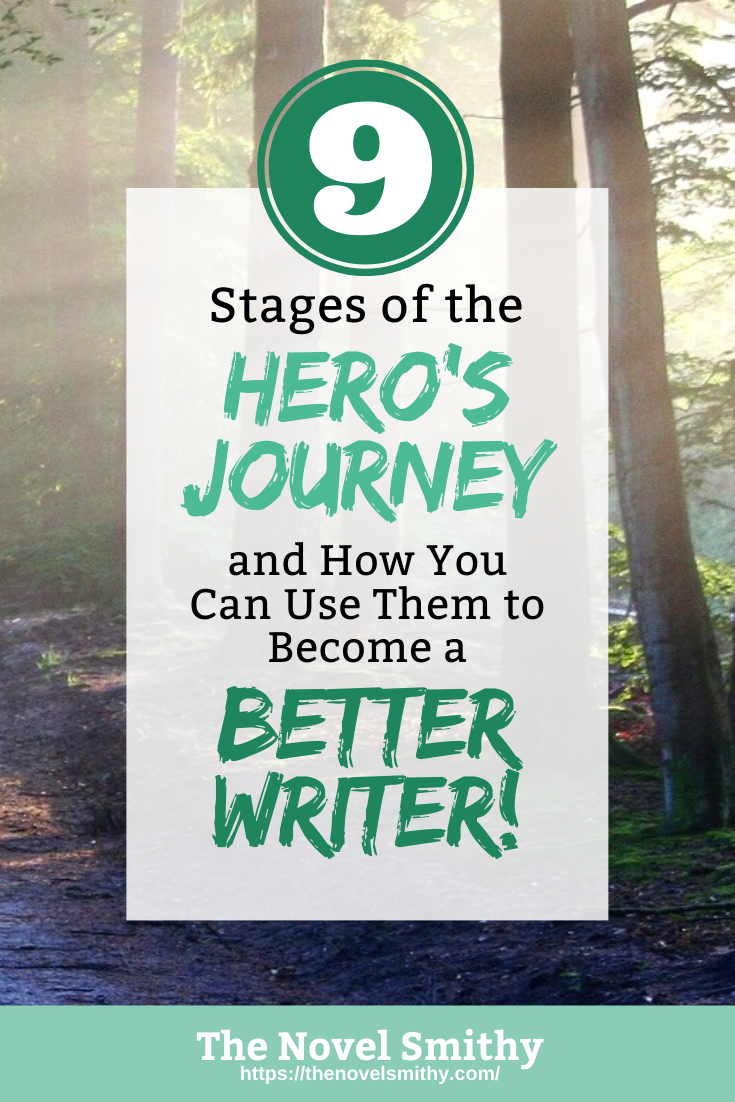
Popularized by Joseph Campbell, the Hero’s Journey was part of his idea of the “Monomyth,” a term describing the universal progression of all human storytelling. He developed this while studying mythology from cultures across the world and throughout history, writing about them in The Hero With a Thousand Faces.
As a follow up, Christopher Vogler wrote The Writer’s Journey , further distilling the ideas of Campbell into a usable storytelling guide.
The result is one of the best storytelling tools around.
At its core, the Hero’s Journey is a form of story structure just like the Three Act Structure. However, in comparison the Hero’s Journey is much more broad, and is something you can see at play in almost every story—regardless of how anti-traditional it may be.
This is because the Monomyth builds on ever-present patterns of growth and change, something humans have been obsessed with forever.
- What is my purpose in life?
- What does it mean to grow up?
- Is there something greater out there?
- What will happen when I die?
These questions have always echoed in the human mind, and been reflected in our storytelling as a result. Thus, the Hero’s Journey is so powerful and omnipresent because it resonates with a core part of our human experience.
“A blunder—apparently the merest chance—reveals an unsuspected world, and the individual is drawn into a relationship with forces that are not rightly understood… They are the result of suppressed desires and conflicts. They are ripples on the surface of life, produced by unsuspected springs. And these may be very deep—as deep as the soul itself.” – Joseph Campbell, The Hero with a Thousand Faces
Using the Hero’s Journey in Your Own Novel
Of course, this is all well and good, but how can you use this Monomyth in your own writing?
Well, one of the best qualities of this structure is that it ties together both your characters and plot. Rather than just being a story structure, the Hero’s Journey can also act as something of a character arc. That’s the most helpful thing about these principles—they apply not only to your plot, but your protagonist’s arc as well, helping you build a more cohesive story.
When combined, you have a powerful recipe for engaging your readers!
Overall, the Hero’s Journey is split into two halves: The Ordinary World, and the Unknown World. The Ordinary World is exactly what it sounds like—your protagonist’s everyday life, complete with all of their flaws and insecurities.
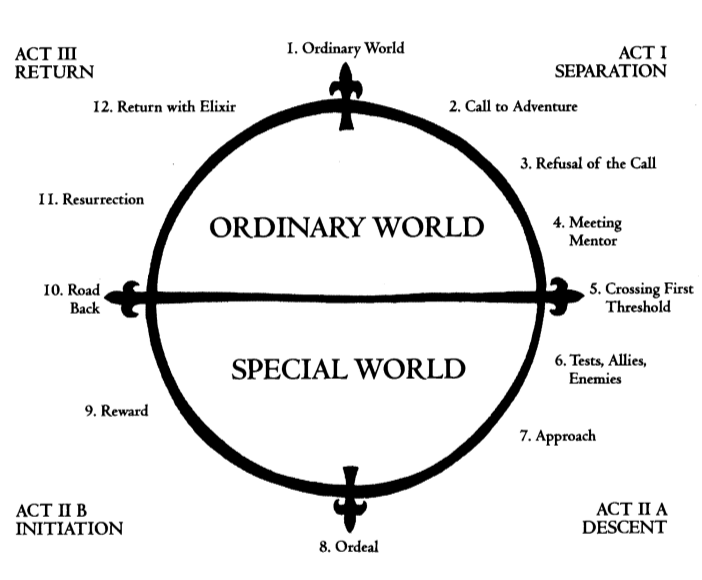
However, a problem is brewing beneath the surface, and this is what will force them to leave home and enter the Unknown World. This Unknown World is where they’ll be tested and forced to grow as a person. Along the way they’ll gain new allies and skills, until they finally return to their Ordinary World to heal it’s suffering and take their place among the heroes.
Throughout this structure, your protagonist’s inner development will mirror the conflict of the story, giving your novel a cohesive and resonant feel. With that said, let’s look at the nine stages of the Hero’s Journey and how to incorporate them in your own storytelling!
The 9 Stages of Campbell’s Monomyth
The ordinary world:.
The start of the Hero’s Journey finds us in the Ordinary World, where readers are introduced to your setting, meet the starting cast, and get to know your protagonist. Essentially, the Ordinary World provides a baseline that will make the Unknown World your protagonist later encounters stand out.
Because of this, you don’t want to neglect this important setup.
Without seeing where your hero is starting from, a world full of magical purple unicorn dragons could be entirely normal to them. Instead, you need to you start your story by showing their normal everyday life in suburban Wisconsin. It’s the contrast between these two worlds that makes them feel impactful.
Alongside this, the Ordinary World also sets up the inner struggle your protagonist will need to overcome during their character arc. It shows how they’ve been living before their journey begins and foreshadows the cracks under the surface. Without this critical knowledge of the Ordinary World, the reader has no metric by which to measure your character’s growth or the growth of their world.
The Call to Adventure and Refusing the Call:
If you’re already a fan of the Three Act Structure, then the Call to Adventure will likely feel at least somewhat familiar.
This is because the Call to the Adventure mimics the Inciting Event and Key Event from the Three Act Structure. Here, your protagonist will learn of the coming conflict and get their first taste of the journey to come—though sometimes they are whisked away with little choice. Most often they’ll also refuse this call, helping your reader better understand the stakes of your story.
If your protagonist has reason to be afraid, then your audience does as well.
This stage allows you to build suspense, foreshadow the power of your antagonist and the dangers ahead, and show off your protagonist’s flaws in action. Are they too timid, headstrong, selfish, or careless? Incorporate this into their Refusal of the Call and show how it will hinder them on the journey ahead.
Overcoming Resistance and Meeting the Mentor:
Now that a Call has been issued, your protagonist will be feeling afraid, hesitant, or even outright resistant to beginning their journey.
Overcoming this resistance requires a period of counsel, where they’ll get advice and encouragement from mentors and allies. Here you’ll prepare your protagonist and audience for what’s coming, while also fitting in some last minute worldbuilding and plot development before your story picks up steam.
Your protagonist will begin collecting the tools and wisdom needed for the road ahead, though they won’t be completely prepared for a while yet. Their inner struggles will continue pushing against them here, and they may neglect important information they’ll regret later on. Still, they’ll also show promise, usually in the form of some redeeming quality that lets your readers know there is hope for them to grow.
Crossing the First Threshold:
This is the true beginning of your story.
Here your protagonist will Cross the First Threshold into the new, Unknown World, officially committing themselves to the journey ahead. There is no turning back from this point, and no returning to the Ordinary World until they’ve completed their quest and grown past their flaws.
Your protagonist will have to prove themselves to make it this far of course, even though they haven’t overcome their inner struggle just yet.
Just as they showed a redeeming quality while Overcoming Resistance and Meeting the Mentor, they’ll need to prove this redeeming quality again to cross into the Unknown World. As an example, Bilbo Baggins temporarily overcomes his fearfulness and leaves the Shire, while Mulan overcomes her self-doubt and joins the Chinese army. However, some characters will be forced into this Unknown World, like when Simba is driven from the Pride Lands by Scar.
Tests and Trials:
Your story has officially entered the Unknown World, and this is when a period of Tests and Trials begin for your protagonist.
Here they’ll gain new allies, new enemies, and new skills. They’ll be beaten down repeatedly, only to get back up again that much stronger and wiser. Essentially, this period is all about preparing them for the bigger battles that lie ahead.
This means that the Tests and Trials period is important for a variety of reasons.
It provides a stark contrast from the more stable Ordinary World and thrusts your protagonist into their new life. However, it also gives them the opportunity—through their new experiences—to prove their strengths, befriend others in your cast, and begin to threaten your antagonist. Overall, these tests will form nearly a quarter of your story’s overall runtime as you approach the Major Ordeal.
The Major Ordeal:
Perhaps confusingly named, the Major Ordeal is not the Climax.
Instead it corresponds with the Midpoint of the Three Act Structure, and shifts your protagonist from a period of reaction to action. After this point, they’ll finally be able to actively drive your plot forward, rather than just being pushed along against their will. They’ll also be rewarded for their success, either through a new tool, new allies, or new knowledge.
The Major Ordeal itself will feature a moment of growth that cements your protagonist’s progress. They’ll have to face their biggest conflict yet, giving them a chance to show how far they’ve come from their Ordinary World. However, don’t let them get ahead of themselves.
They haven’t overcome their inner struggle yet, though they may think they have.
To pick on Mulan again, her Major Ordeal occurs when she retrieves the arrow from the top of the pole in the middle of camp, proving her cleverness and intelligence. She has gained the acceptance of her comrades, but she is still living in disguise. This will come back to punish her later, just as your protagonist’s flaw will come back to punish them.
The Road Back:
With the Major Ordeal behind them, the Road Back prepares your protagonist to face the finale of your story.
They’re now driving the plot, seeking out your antagonist or otherwise planning their defeat, and likely beginning the trek to wherever their final showdown will take place. Here your pacing will speed up as well. You’re preparing for a climactic showdown, and both your cast and your readers are ready to see this journey come to its conclusion.
This creates the perfect opportunity to remind your protagonist of the stakes.
In the afterglow of the Major Ordeal, you need to show them why their journey isn’t over yet. Reveal the cracks still left by their flaw, and remind them that no matter how much they try to cover them up, they must deal with them soon. The conflict is far from over, and there’s still danger ahead.
Mastering the Journey:
With your story coming to its close, its time for your protagonist to prove they’ve mastered their journey—and as you can probably guess, this overlaps with the Climax and the Climactic moment from the Three Act Structure. Here they’ll do battle against your antagonist and face their final test, hopefully overcoming their inner struggle in the process.
As a result, everything in your story needs to come together here.
All of your themes, subplots, characters, symbols, motifs—it’s called the Climax for a reason! Of course, this is also the culmination of your protagonist’s arc. Here they’ll face the most difficult test of their flaws, and will have to use all of the knowledge, skills, and alliances they’ve gained to survive.
Ultimately, without the journey they just went on, they would never be able to succeed.
Returning with the Elixir:
With your story’s conflict resolved, it’s now time for your protagonist to recover. To Return with the Elixir references the end of many myths where the hero brings the rewards of their journey back to their home village, healing the lives of everyone around them—not just their own. In terms of the traditional Three Act Structure, this mirrors your Resolution.
Essentially, your goal in these final scenes is to complete the circle of your story.
At the end of many adventures the protagonist returns home to their Ordinary World, experiencing echoes from the start of their journey. Yet everything feels different, and they quickly realize how their quest has changed them. Others don’t make a physical return, but instead see similar situations to those they struggled with or felt uncomfortable in at the start, this time unfazed by what seemed so intimidating before.
Either way, these final moments will be bittersweet, joyful, and maybe even a bit sad.
Most importantly, they’ll provide an important sense of catharsis for your readers, a release of the emotional tension your story created. So—to use this ending to its full effect—make sure you give your readers a moment to relax with your cast before they close the back cover.
Understanding the Monomyth
At the end of the day, the Hero’s Journey embodies patterns seen in almost all human storytelling, and it’s also a great tool for writers wanting to more deeply understand their own stories. While it’s not without it’s flaws, it can still serve as a great starting point for telling your own epic adventures!
Of course, the Hero’s Journey isn’t the only form of story structure out there. If you’re interested in exploring everything else story structure has to offer, I hope you’ll take a moment to check out The Complete Story Structure Series , a collection of articles on The Novel Smithy dedicated to everything structure.
How does the Hero’s Journey impact your stories? Let me know in the comments!
Thoughts on the 9 stages of the hero’s journey and how to use them.
Hi, I have four books out and a new one almost ready. This may be the best explanation of the Journey I’ve read. And, I’ve read a lot, including Hero with a Thousand Faces and the Writer’s Journey. I especially like your take on Crossing the Threshold and the Major Ordeal. Those two entries helped clear a lot of fog on the subject for me.
Thanks. Charles Hampton
Glad to hear it Charles! 🙂
Leave a Reply Cancel reply

The Hero’s Journey: A Classic Story Structure
Writing a compelling story, especially if you’re new at this, can be grueling.
Conflicting advice online can overwhelm you, making you want to quit before you’ve written a word.
But you know more than you think.
Stories saturate our lives. We talk, think, and communicate with story in music, on television, in video games, in books, and in movies.
Every story, regardless of genre or plot , features a main character who begins some adventure or quest, overcomes obstacles, and is transformed.
This is generically referred to as The Hero’s Journey, a broad story template popularized by Joseph Campbell in his The Hero with a Thousand Faces (1949).
In essence, every story ever told includes at least some of the seventeen stages he outlined .
In 1985, screenwriter Christopher Vogler wrote a memo for Disney titled The Practical Guide to Joseph Campbell’s The Hero with a Thousand Faces that condensed the seventeen steps to twelve.
The Hero’s Journey template has influenced storytellers worldwide, most notably George Lucas (creator of Star Wars and Indiana Jones ).
Vogler says of Campbell’s writings: “The ideas are older than the pyramids, older than Stonehenge, older than the earliest cave painting.”
The Hunger Games by Suzanne Collins is a prime example of The Hero’s Journey, so I use “she” inclusively to represent both genders.
- The 3 Hero’s Journey Stages
1. The Departure (Separation)
The hero is compelled to leave her ordinary world.
She may have misgivings about this compulsion, and this is where a mentor may come to encourage and guide her.
Example: Katniss Everdeen is a devoted sister, daughter, and friend. She’s an avid hunter, well acquainted with the forbidden forest outside District 12, where she and her friend Gale hunt to keep their families from starving. The Hunger Games, wherein only one winner survives, loom, and she fears she or one of her friends will be chosen.
2. Initiation
The hero crosses into the other world, where she faces obstacles.
Sometimes she’s alone, sometimes she’s joined by a companion. Maybe a few.
Here she must use the tools she’s been given in her ordinary life to overcome each obstacle. She’ll be rewarded, sometimes tangibly.
Eventually she must return to the ordinary world with her reward.
Example: District 12’s Representative and Stylist Effie Trinket arrives to choose the Tributes who will compete in The Hunger Games.
Katniss and her family attend, and she breathlessly wills Effie not to draw her name. She gets her wish, but to her horror, her little sister Primrose is chosen.
Peacekeepers shove Prim toward the stage before Katniss volunteers to take her place. She’s joined by the male tribute, the baker’s son Peeta. They are soon whisked away for training and then the competition.
The hero crosses the threshold back into her ordinary world, which looks different now. She brings with her the rewards and uses them for good.
Example: Unexpectedly, Katniss and Peeta are told there can be two victors instead of one. But Katniss and Peeta, to the dismay of the Capitol, decide they’ll die together or emerge as victors together. They emerge not only as victors, but also as celebrities. They have changed in unimaginable ways.
- The 12 Hero’s Journey Steps (and How to Use Them)

1 — Ordinary World
Before your hero is transported to another world, we want to see her in her ordinary world—who is she when no one is watching? What drives her?
This sets the stage for the rest of your story , so show her human side. Make her real and knowable.
But don’t wait long to plunge her into terrible trouble. Once you give your readers a reason to care, give them more to keep them turning the pages.
Example: Katniss Everdeen is introduced as a teenager for whom life isn’t easy. Her father is dead, her mother depressed, and Katniss will do anything to provide for her family and protect her little sister.
2 — The Call to Adventure
This is the point at which your hero’s world can never be the same. A problem, a challenge, or an adventure arises—is she up to the challenge?
Example: The Reaping, where Katniss volunteers to take Prim’s place.
3 — Refusal of the Call
Occasionally, a hero screeches to a halt before the adventure begins. When faced with adversity, she hesitates, unsure of herself.
She must face her greatest fears and forge ahead.
Example: There is no refusal of the call in The Hunger Games. Katniss eagerly steps forward.
4 — Meeting With the Mentor
The mentor may be an older individual who offers wisdom, a friend, or even an object, like a letter or map.
Whatever the form, the mentor gives your hero the tools she needs for the journey—either by inspiring her, or pushing her in the direction she needs to go.
Example: Katniss is introduced to Haymitch the minute she reaches the stage to accept the challenge. He’s the only person from District 12 to have ever won The Hunger Games. She’s not initially impressed, but he eventually becomes her biggest ally.
5 — Crossing the First Threshold
In the final step of the departure phase, your hero musters the courage to forge ahead, and the real adventure begins.
There’s no turning back.
By now, you’ve introduced your hero and given your readers a reason to care what happens to her. You should have also introduced the underlying theme of your story .
Why is it important for your hero to accomplish this task?
What are the stakes?
What drives her?
Example: Katniss is transported via train to the Capitol to begin training for The Hunger Games. She’s promised Prim she’ll do everything in her power to return home.
Your hero is laser focused, but this is the point at which she faces her first obstacle. She will meet her enemies and be forced to build alliances. She will be tested and challenged.
Can she do it?
What does she learn in this initiation phase?
Example: Katniss meets her competitors for the first time during training and is able to watch them to get a sense of what challenges lie ahead.
6 — Tests, Allies, and Enemies
Things have shifted in the new world. Danger lies ahead. Alliances are formed, chaos ensues.
Your hero may fail tests she’s confronted with at first, but her transformation begins. She has the ability and knowledge to accomplish her tasks, but will she succeed?
Example: The Hunger Games begin. Tributes die. Katniss fights without water or a weapon. Her allies are Peeta and young Rue (the 12-year-old Tribute from District 11). The strongest players have illegally spent their young lives training for The Hunger Games and loom as her enemies from the start.
7 — Approach to the Inmost Cave
Your hero approaches danger—often hidden, sometimes more mental than physical. She must face her greatest fears time again and may even be tempted to give up. She has to dig deep to find courage.
Example: Katniss is in the arena, the games underway. There’s no escape. She’s seen death, fears she may be next, and must find water and a weapon to survive.
8 — The Ordeal
Your hero’s darkest moment and greatest challenge so far, in a fight for her life, she must find a way to endure to the end.
This may or may not be the climax of your story, but it is the climax of the initiation stage.
During this terrible ordeal, the steepest part of her character arc takes place.
Example: Katniss faces dying of thirst (if she’s not killed by another Tribute first) and faces every obstacle imaginable, including the death of Rue, before she finally wins the battle.
9 — Reward (Seizing the Sword)
Against all odds, your hero survives. She’s defeated her enemies , slain her dragons—she has overcome and won the reward.
Whether her reward is tangible depends on the story. Regardless, your hero has undergone a total inward and outward transformation.
Example: Peeta and Katniss stand alone in the arena, told that because they are from the same district they can both claim the victory—or can they?
10 — The Road Back
As she begins to cross the threshold back into the ordinary world, she learns the battle isn’t finished.
She must face the consequences for her actions during the initiation stage.
She’s about to face her final obstacle.
Example: The Capitol reverses and announces that only one winner will be allowed.
11 — The Resurrection
During this climax of your story, your hero faces her final, most threatening challenge.
She may even face death one more time.
Example: Katniss and Peeta decide that if they can’t win together, there will be no winner. They decide to call the Capitol’s bluff and threaten to die together. As they are about to eat poison berries, the Capitol is forced to allow two winners.
12 — Return With the Elixir
Your hero finally crosses the threshold back into her ordinary life, triumphant. Only things aren’t so ordinary anymore.
She’s been changed by her adventure. She brings with her rewards, sometimes tangible items she can share, sometimes insight or wisdom. Regardless, this all impacts her life in ways she never imagined.
Example: Katniss and Peeta return home celebrities. They’re given new homes, plenty of food to share, and assistants who tend to their needs. Katniss learns that her defiance of the Capitol has sparked a revolution in the hearts of residents all across Panem.
- Hero’s Journey Examples
You may recognize The Hero’s Journey in many famous stories, including Greek Mythology and even the Bible. Other examples:
- Sleeping Beauty
- Lord of the Rings
- Indiana Jones
- Sherlock Holmes
- Pilgrim’s Progress
- The Wizard of Oz
- Should You Use The Hero’s Journey Story Structure?
Structure is necessary to a story , regardless which you choose. Because the Hero’s Journey serves as a template under which all story structures fall, each bears some variation of it.
For fiction or nonfiction, your story structure determines how effectively you employ drama, intrigue, and tension to grab readers from the start and keep them to the end.
For more on story structure, visit my blog post 7 Story Structures Any Writer Can Use .

Are You Making This #1 Amateur Writing Mistake?

Faith-Based Words and Phrases

What You and I Can Learn From Patricia Raybon

Before you go, be sure to grab my FREE guide:
How to Write a Book: Everything You Need to Know in 20 Steps
Just tell me where to send it:

Enter your email to instantly access my ultimate guide to writing a novel.
Exploring the 12 Stages of the Hero’s Journey Part 12: The Return

This is the final installment of our 12-part series of blog posts on a celebrated archetypal story concept. We dive into this archetypal story structure according to Joseph Campbell's The Hero's Journey and Christopher Vogler's interpreted twelve stages of that journey within his book, The Writer's Journey: Mythic Structure for Writers.
Welcome to Part 12 of our 12-part series ScreenCraft’s Exploring the 12 Stages of the Hero’s Journey , where we go into depth about each of the twelve stages and how your screenplays could benefit from them. You can read the entire series via our free e-book which you can download here :
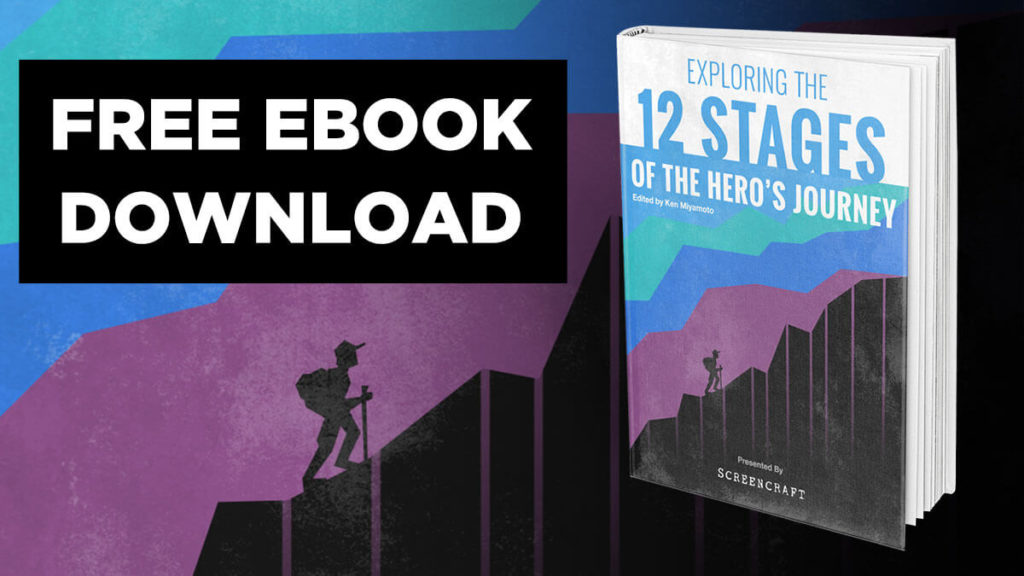
The first stage — The Ordinary World — happens to be one of the most essential elements of any story, even ones that don't follow the twelve-stage structure to a tee.
Showing your protagonist within their Ordinary World at the beginning of your story offers you the ability to showcase how much the core conflict they face rocks their world. And it allows you to foreshadow and create the necessary elements of empathy and catharsis that your story needs.
The next stage is the Call to Adventure. Giving your story's protagonist a Call to Adventure introduces the core concept of your story, dictates the genre your story is being told in and helps to begin the process of character development that every great story needs.
When your character refuses the Call to Adventure, it allows you to create instant tension and conflict within the opening pages and first act of your story. It also gives you the chance to amp-up the risks and stakes involved, which, in turn, engages the reader or audience even more. And it also manages to help you develop a protagonist with more depth that can help to create empathy for them.
Along the way, your protagonist — and screenplay — may need a mentor. Meeting the Mentor offers the protagonist someone that can guide them through their journey with wisdom, support, and even physical items. Beyond that, they help you to offer empathetic relationships within your story, as well as ways to introduce themes, story elements, and exposition to the reader and audience.
At some point at the end of the first act, your story may showcase a moment where your protagonist needs to cross the threshold between their Ordinary World and the Special World they will be experiencing as their inner or outer journey begins. Such a moment shifts everything from the first act to the second, allowing the reader and audience to feel that shift so they can prepare for the journey to come.
It showcases the difference between the protagonist's Ordinary World and the Special World to come. And, even more important, we're introduced to the first shift in the character arc of the protagonist as they decide to venture out into the unknown.
And it's within this unknown that the protagonist faces many tests and meets their allies and enemies — all of which define the meat of your story by introducing the conflict, expanding the cast of characters, and offering a more engaging and compelling narrative.
Once you've put your protagonist through those tests and once they've met their allies and enemies, they're going to need to Approach the Inmost Cave of the story — preparing to face their greatest fears and conflicts. This is an essential element of your narrative, allowing the reader, audience, and characters to catch their breath, reflect, review, and plan ahead for the conflict just over the horizon. And it allows you, the writer, to build the necessary tension and anticipation that you need going into the midpoint of your story.
Everything within the first act — and the beginning of the second — builds up to The Ordeal, which is the first real conflict that the protagonist must face. The Ordeal is the midpoint of your story that works as a false climax, taking your protagonist to the depths of despair. It offers you the ability to create an engaging midpoint climax that takes you into the third act. It ups the stakes within your story by taking away beloved allies and mentors. And it sets up the necessary transformation that your protagonist must go through in order to prevail.
And after your hero has gone through all of that, you may want or need to reward them with something that they can use to take on the final threat they face during the climax of your story.
The Reward offers the protagonist the added boost they need to propel themselves through the conflict they face during the climax of the story where they are facing their toughest challenge — be it physical or emotional. A special weapon, an elixir, some knowledge, an experience, or reconciliation are the five types of rewards that heroes need to prevail.
Once they've attained the Reward, it's time for the hero to get on The Road Back to their Ordinary World. The Road Back allows the hero — and the reader and audience — to see the light at the end of the tunnel, if not for a few brief moments. It then introduces more conflict, higher stakes, and reveals everything that is at risk going into the climax of the protagonist's journey.
And the climax of your hero's journey encompasses The Resurrection stage. It's not just about defeating the villain, winning the big game, getting the girl or guy, or accomplishing a goal. Your hero needs to be transformed by the end of the story. They need to be resurrected as a better version of themselves after having endured this long journey full of tests, obstacles, and hurdles. And their final test in this climax needs to be the ultimate challenge with the highest of stakes. That's how you end your script with a bang — both physically and emotionally, as far as whatever the story and genre may be.
And once they accomplish that, you can have your protagonist return to their Ordinary World.
Here are three reasons why your hero should make that return.
1. To Have the Story Come Full Circle
The reader and audience are on this ride with your protagonist. They empathize with them. The story creates a cathartic reaction. We want to see the story resolved. We want to witness some closure so that we know the character's journey has ended.
So what better way to accomplish that than letting them go back to their Ordinary World to either flaunt their success or show people that they've changed for the better?
In Willow , we see the titular protagonist return to his village a hero. When he left, he was considered a joke — a naive wannabe sorcerer. But now, he's welcomed with open arms as he showcases the knowledge and experience that he's learned. Oh, and he's saved the world from evil as well.
In A Bug's Life , after the grasshoppers have been defeated, Flick is welcomed back into the community as a hero instead of a hindrance. The ants are even using some of his inventions that originally caused the workers grief and chaos.
In Back to the Future , Marty returns to his Ordinary World, only to discover that he positively influenced his family's life as a result of his actions in the past.
Note: Scene shown in mirror image within the below video.
A cinematic story takes a reader — and later, an audience — on a ride. It may be a physical thrill ride or emotional rollercoaster, but, in the end, that ride must always come to a close. And it helps to give people a sense of closure to see the conflict of the story resolved. And there's no better place to do that than visiting the hero's Ordinary World once again — after all is well.
2. To Complete the Character Arc
When we follow a character for a long period of time, we want to see their character grow, change, or better themselves. It offers the reader and audience a sense of closure and catharsis.
When we put the protagonist back into their Ordinary World, it makes the reader and audience wonder how they'll react.
Have they changed?
Will they fall into the same pattern that they were in when they were introduced within their Ordinary World?
In Back to the Future Part III , Marty has learned to put his ego in check — a key theme throughout the second and third films.
In Toy Story , Woody has learned that new isn't necessarily such a bad thing. He handles change much better.
In The Matrix , Neo returns to the Matrix with his newfound powers and sense of consciousness. He's gone from an unknowing character to an all-knowing hero, ready to take on any threats.
The Return to the Ordinary World gives your protagonist the opportunity to prove that they've changed for the better, learned something, or have attained a certain power or piece of knowledge that will help them — and maybe others within their Ordinary World — take on any and all future conflicts.
3. To Allow the Reader and Audience to Live Vicariously
Because catharsis is so vital to the cinematic experience — that's why people go to the movies — having the hero return to their Ordinary World triumphant offers the reader and audience a chance to feel the glory of that return. And if it's not glory, it's a sense of calm, knowing that everything is going to be okay for the character they've lived vicariously through.
In Good Will Hunting , we're back to Will's Ordinary World. Yes, he's had a breakthrough with Sean. Yes, he has completed his court-ordered punishment. But Skylar is gone. Everything else in his life is better, but he lost out on the love of his life.
And now he's back in his routine — or so we think. It's another day. Will's friends arrive in his driveway. His best friend gets out and knocks on his door, ready to go through another day in their routine Southie lives.
But wait, Will's not home.
We feel that cathartic moment of going after the love of your life through the actions of Will. And we're left energized and inspired.
In Titanic , Rose has survived. She's back in a version of her Ordinary World, off of the Titanic. As she waits on the rescue ship, she sees her fiance and her mother, two forces of negativity that represent the life she was stuck in before she met Jack. And even though Jack is gone, we soon learn that she went on to live an amazing life full of adventure and intrigue. She's taken what she learned from Jack about life, and went on to live life to its fullest.
The message and center theme of the film offers the audience the cathartic feeling of the appreciation of life. We're left with a sense of wanting to be better and wanting to live life to its fullest. And we experience that vicariously through Rose.
When the reader closes your script or when the audience walks out of that theater, they go back to their Ordinary World changed — just like your protagonist has by returning to their Ordinary World and proving that they've changed themselves.
Not every story calls for the protagonist to return to their Ordinary World, but it's a wonderful tool to consider using within your cinematic tales.
And remember...
"The Hero's Journey is a skeleton framework that should be fleshed out with the details of and surprises of the individual story. The structure should not call attention to itself, nor should it be followed too precisely. The order of the stages is only one of many possible variations. The stages can be deleted, added to, and drastically shuffled without losing any of their power." — Christopher Vogler, The Writer's Journey: Mythic Structure for Writers
Joseph Campbell's 17-stage Monomyth was conceptualized over the course of Campbell's own text, The Hero with a Thousand Faces, and then later in the 1980s through two documentaries, one of which introduced the term The Hero's Journey .
The first documentary, 1987's The Hero's Journey: The World of Joseph Campbell , was released with an accompanying book entitled The Hero's Journey: Joseph Campbell on His Life and Work .
The second documentary was released in 1988 and consisted of Bill Moyers' series of interviews with Campbell, accompanied by the companion book The Power of Myth .

Christopher Vogler was a Hollywood development executive and screenwriter working for Disney when he took his passion for Joseph Campbell's story monolith and developed it into a seven-page company memo for the company's development department and incoming screenwriters.
The memo, entitled A Practical Guide to The Hero with a Thousand Faces , was later developed by Vogler into The Writer's Journey: Mythic Structure for Storytellers and Screenwriters in 1992. He then elaborated on those concepts for the book The Writer's Journey: Mythic Structure For Writers .
Christopher Vogler's approach to Campbell's structure broke the mythical story structure into twelve stages. We define the stages in our own simplified interpretations:
- The Ordinary World : We see the hero's normal life at the start of the story before the adventure begins.
- Call to Adventure : The hero is faced with an event, conflict, problem, or challenge that makes them begin their adventure.
- Refusal of the Call : The hero initially refuses the adventure because of hesitation, fears, insecurity, or any other number of issues.
- Meeting the Mentor : The hero encounters a mentor that can give them advice, wisdom, information, or items that ready them for the journey ahead.
- Crossing the Threshold : The hero leaves their ordinary world for the first time and crosses the threshold into adventure.
- Tests, Allies, and Enemies : The hero learns the rules of the new world and endures tests, meets friends, and comes face-to-face with enemies.
- The Approach : The initial plan to take on the central conflict begins, but setbacks occur that cause the hero to try a new approach or adopt new ideas.
- The Ordeal: Things go wrong and added conflict is introduced. The hero experiences more difficult hurdles and obstacles, some of which may lead to a life crisis.
- The Reward : After surviving The Ordeal, the hero seizes the sword — a reward that they've earned that allows them to take on the biggest conflict. It may be a physical item or piece of knowledge or wisdom that will help them persevere.
- The Road Back : The hero sees the light at the end of the tunnel, but they are about to face even more tests and challenges.
- The Resurrection : The climax. The hero faces a final test, using everything they have learned to take on the conflict once and for all.
- The Return : The hero brings their knowledge or the "elixir" back to the ordinary world.
Ken Miyamoto has worked in the film industry for nearly two decades, most notably as a studio liaison for Sony Studios and then as a script reader and story analyst for Sony Pictures.
He has many studio meetings under his belt as a produced screenwriter, meeting with the likes of Sony, Dreamworks, Universal, Disney, Warner Brothers, as well as many production and management companies. He has had a previous development deal with Lionsgate, as well as multiple writing assignments, including the produced miniseries Blackout , starring Anne Heche, Sean Patrick Flanery, Billy Zane, James Brolin, Haylie Duff, Brian Bloom, Eric La Salle, and Bruce Boxleitner. Follow Ken on Twitter @KenMovies
For all the latest ScreenCraft news and updates, follow us on Twitter, Facebook , and Instagram .
Get Our Screenwriting Newsletter!
Get weekly writing inspiration delivered to your inbox - including industry news, popular articles, and more!
Facebook Comments
Free download.

Screenwriting Resources:

$ 15.00 $ 12.00 Add to cart
Popular Posts

Recent Posts

Next Related Post
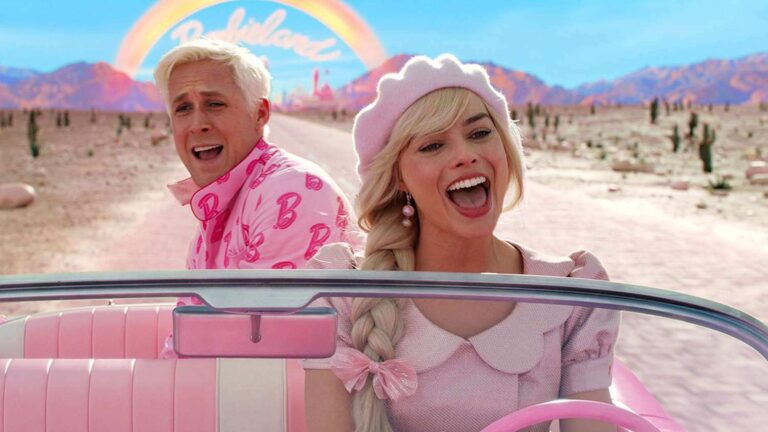
Get Our Newsletter!
Developing your own script.
We'll send you a list of our free eCourses when you subscribe to our newsletter. No strings attached.
You Might Also Like

- Hidden Name
- Email This field is for validation purposes and should be left unchanged.
Connect With Us
Writing competitions, success stories.
© 2024 ScreenCraft | An Industry Arts Company
Wait! Subscribe to get our free Newsletter
Join our community of over 100,000 screenwriters and get weekly inspiration delivered to your inbox.
Screenwriting Newsletter
Join our community of over 100,000 screenwriters and get weekly inspiration delivered to your inbox:
✓ Popular blog posts and industry news ✓ New ScreenCraft online events ✓ Screenplay competition announcements!
" * " indicates required fields
- Translators
- Graphic Designers
Please enter the email address you used for your account. Your sign in information will be sent to your email address after it has been verified.
The Hero's Journey: Stages, Steps, and Examples

Remember when you were younger, probably around middle school age, and your teacher introduced the Greek mythology lesson? It was such an exciting time of reading books like Rick Riordan's Percy Jackson & The Olympians: The Lightning Thief . Maybe you fell in love with Percy, a lovable and relatable young boy struggling with his identity. Or maybe you were a part of the dystopian crave and fell in love with Katniss Everdeen from Suzanne Collins' The Hunger Games . Either way, this may have been your first introduction to the hero's journey (we're sure you've seen the templates). After all, the hero's journey is all around us!
If you fell in love with reading a hero's journey archetype and want to try to create your own modern hero, then you've come to the perfect place. We're going to explore the crucial steps of a hero's journey and what they entail, so you can have a template through which to write your own story. Your questions act as our call to action (you'll understand what we mean by that shortly). But first, let's define a hero's journey. After all, how can we possibly evaluate the steps of a hero's journey if we don't even have a solid definition?
The hero's journey
A hero ventures forth from the world of common day into a region of supernatural wonder: fabulous forces are there encountered and a decisive victory is won: The hero comes back from this mysterious adventure with the power to bestow boons on his fellow man. The Hero With a Thousand Faces by Joseph Campbell
The hero's journey is the story of a hero who leaves the ordinary world to go on an adventure full of peril. On it, the hero will gain both adversaries and allies, and will face a great evil. The hero will also face his shadow self, which is perhaps the most frightening antagonist of all.
Campbell references 17 total steps in the hero's journey. Wait a minute, 17 steps? That seems like a lot. Don't worry! Depending on who you ask, the number of steps and what those steps look like will differ, though they all follow a similar template. The hero's journey is commonly accepted to have 12 main steps. To make it even simpler on you, these steps can actually be broken down into three stages: the departure, the initiation, and the return.
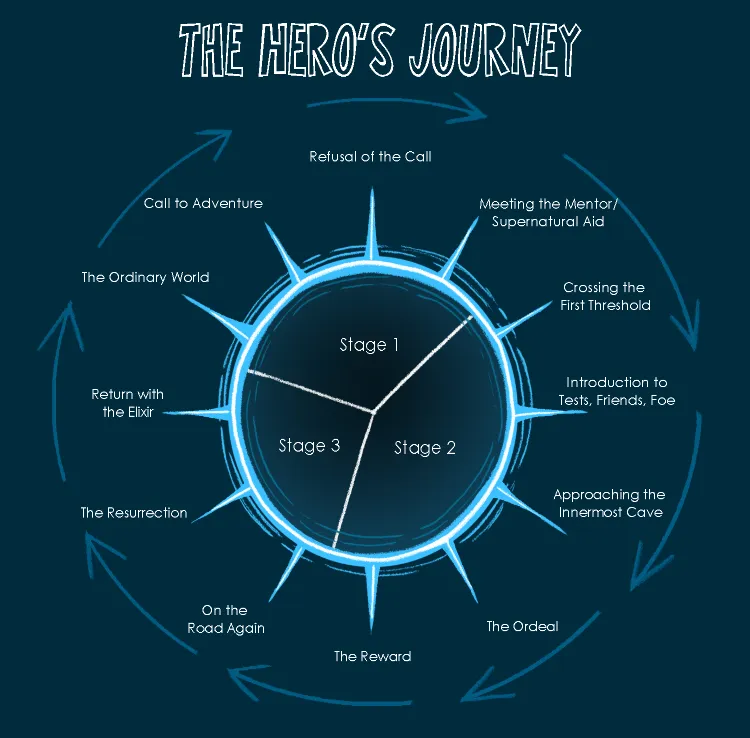
Stage 1: the departure

The departure is just as you might expect. This is the stage where the protagonist is introduced, typically in a modern, realistic setting, and we are introduced to some struggles the protagonist may be experiencing or questions they may have about their own identity. This stage can be broken into our first four steps.
- The ordinary world : As we said, we are first introduced to our protagonist and soon-to-be hero in the reality we know. It is just as the first step is listed: the ordinary world. There is no magic, mayhem, or supernatural creatures evident in this ordinary world. It is the world the protagonist has known all their life.
- Call to adventure : This is one of the steps you may be most familiar with, as it's one of the most commonly known phrases in literature. Regardless of what genre you are writing, your hero has a call to action. After all, there must be a reason why the protagonist leaves the mundane, comfortable lifestyle they've lived up until now. This is the moment where the journey or quest is initiated: a problem, challenge, or quest is presented to the protagonist, and they must decide to leave behind their ordinary lives to face new challenges. Whether the protagonist is immediately threatened, a family member is threatened, or they see something they shouldn't have, it is up to the protagonist to respond to the call.
- Refusal of the call : Wow, isn't it so cool that the hero was discovered by some other world (or they discovered it!) and now they get to embark on this awesome journey? Yes, well, sometimes. Despite how amazing it may seem to be called to accept a quest (hence the reason why this archetype is so popular in literature), the protagonist may not be feeling that excitement. In fact, it's likely that the protagonist is feeling nervous, anxious, scared, hesitant, and thus, resistant to the call at first (don't worry, they'll give in eventually).
- Meeting the mentor/supernatural aid : Okay, so the protagonist is done refusing the call. Maybe they've gotten over their fears, or maybe something happened that makes it impossible for them to continue to deny their inevitable quest. Yay! Now it's time for our protagonist to meet their mentor. The mentor can be supernatural or not, but they act as a teacher, trainer, and instructor for the protagonist. After all, the protagonist is going to need some serious guidance once they've been booted out of their ordinary world. This step involves a lot of trust, though, as the protagonist may barely know their mentor. This step also involves the passing on of certain tools and equipment the protagonist may need to succeed on their journey. These can be special powers or physical instruments.
Stage 2: the initiation
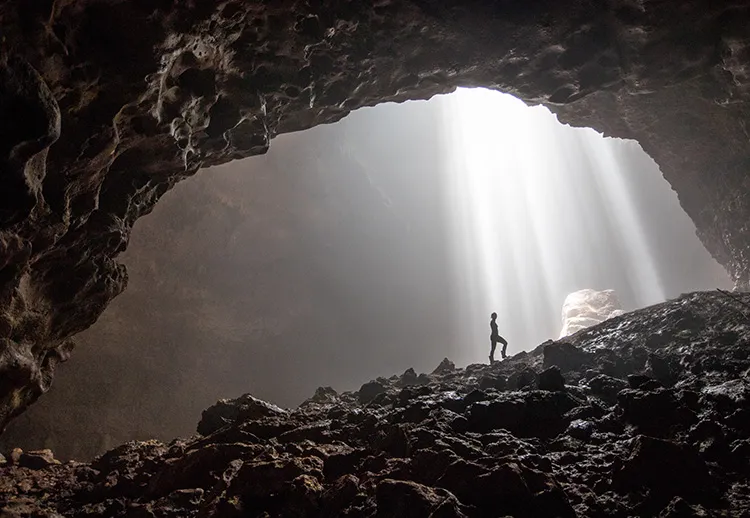
Now that you've spent a decent chunk of time introducing your protagonist (and hero!) and their conflict, it's time to head into the second stage of the hero's journey: the initiation. Before you do this, though, ensure you've checked off the first four items on the previous list. It is crucial that you meet these criteria for a successful hero's journey. After all, the hero can't be truly initiated into their new world if you have not established their old world, their main conflict, and the introduction of their next steps.
This next stage will take up the largest portion of your story. You should fill it with lots of new characters, settings, and trials and tests for your protagonist to endure. This is also a stage where you should focus a lot on character development for your protagonist. No person is going to go through a massive journey and end up the same person they once were when everything is said and done. Take this time to think about how you want your protagonist to change and what it's going to take to accomplish that change.
- Crossing the first threshold : This is the point at which the hero decides to embark on the adventure and cross over into the unknown, leaving his or her ordinary world behind. This is called the threshold because there is something or someone acting as a literal barrier between the protagonist's ordinary world and their new world. Beyond the threshold lies trials and tribulations and potential risks and dangers. Once the protagonist takes that first step beyond this threshold, there is no returning to the life they once knew. This is where the hero's actual journey truly begins.
- Introduction to tests, friends, and foe : This is the step of the story where the cast of characters expands and a new setting, the new world, is introduced. The protagonist may be lost in their new world, so they must evaluate the new people around them to identify potential allies, enemies, or morally ambiguous characters. Trust is established or denied. Just like anyone would struggle with encountering anew environment, the protagonist will endure some struggles of their own, but this is how they'll determine who is friend and who is foe, establishing other character roles in the process. The rules of the ordinary world do not apply to this new world, so hopefully the protagonist meets some good people who will teach him the new ways of life.
- Approaching the innermost cave : At this point on the hero's journey, they have left all semblance of the ordinary world behind. This step marks the preparation for the main event of the journey. The protagonist may gather materials and even other characters, if they're trustworthy enough, to take on the rest of the steps of the quest with them. The cave acts as a metaphor for what the protagonist is about to endure: risk, danger, darkness, and even potential loss. This step also includes some of the tests leading up to the large test yet, which happens to be the next step in the hero's journey.
- The ordeal : Buckle up, this is about to be a wild ride! That's right, your hero has finally made it to one of the biggest challenges of all. The protagonist is no longer approaching the innermost cave. Rather, the protagonist is now fully in the belly of the beast, and what a beast it is! The ordeal is usually not the climax of the story, but this is the moment where the protagonist truly transforms from an ordinary character into a true hero. It may involve their greatest fear or a physically or mentally demanding task.
- The reward : If your protagonist, now hero, succeeds in their greatest challenge, then they will be given a reward that makes the journey worth so much time, effort, and challenge. If they can succeed, then there is hope for them, that bright light that shines through the top of a dark cave and promises fulfillment and a future. This is what the hero has been fighting for this whole time. As for the reward itself, you should make sure it makes sense in the context of your story. It can be an object, a piece of knowledge, or even something entirely different, so long as its value matches the degree of the journey.
Stage 3: the return

Wahoo, your hero has endured so much and has finally gotten their reward! It's over, right? They can return to their ordinary life and reap the benefits of all their hard work? Wrong! Things are never as easy as they seem, especially in a hero's journey, so why would the road back to the ordinary world be any different for your hero?
- On the road again : This is the turning point, literally. The hero turns back around, hoping to return to their normal life after receiving their reward. But thing's are never that simple, so be sure to make sure that road is blocked. Traffic cones, stoplights, maybe a supernatural villain or catastrophic natural disaster! That should do the trick. If the road back home was easy, we'd be bored, so maintain the stakes with challenges for the hero to face as they make their way back home.
- The resurrection : Congratulations, you've finally reached the climax of your story. Remember how we said the ordeal was the moment where your protagonist transformed from an ordinary character into an actual hero, this is the moment where they can prove to us that they deserve the hero title, after all. The stakes become extremely high, as the hero does not want to fail after having endured so much already. This is the final test for the hero and the final opportunity for the villain or opposing forces to defeat the hero. If the hero comes out on top, then they will finally be able to reach that light at the end of the tunnel.
- Return with the elixir : The hero has finally completed all their challenges and is able to return home with their reward. Their transformation is complete, and they've most likely become a better person because of the journey. Or, if you want to add a twist to this step, you can always have the hero fail to return without they set out to receive, but you better be prepared to write a sequel and a whole other journey!
Following the template
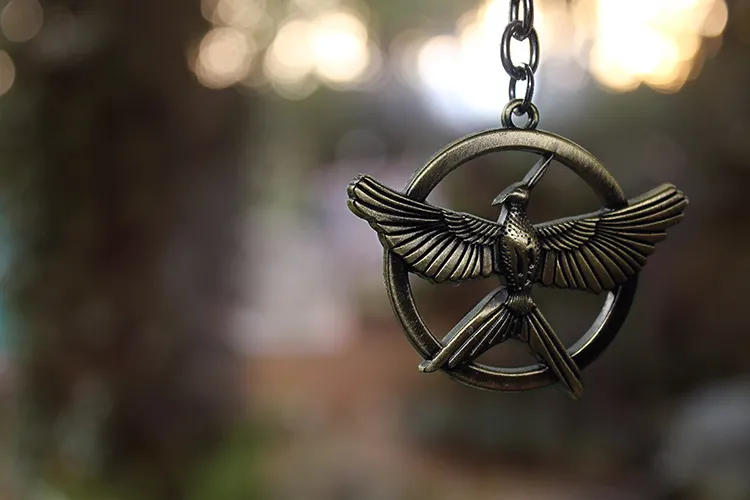
Since we mentioned The Hunger Games at the very beginning, let's use Katniss Everdeen and her hero's journey as a model for this template.
- The ordinary world : Katniss Everdeen is introduced as a citizen on District 12, a poor mining district. She spends her days hunting in the woods to provide food for her family.
- The call to action : Every year, a reaping takes place where a male and female tribute from each district is randomly chosen to take place in the Hunger Games, a fight to the death. During the reaping, Katniss' sister Primrose is selected, so Katniss volunteers to take her place as the female tribute from District 12.
- Refusal of the call : As we mentioned, you may not include all 12 steps of the hero's journey in your own story. Katniss does not actually refuse the call, as she volunteered herself to save her sister. A refusal of the call is slightly seen in Peeta, Katniss' fellow tribute, as he is visibly nervous and shaken up. The nature of this story makes it so that a refusal is impossible.
- Meeting the mentor : Katniss meets Haymitch Abernathy, a previous Hunger Games victor from her District. He is her literal mentor and is meant to teach her how to make allies, get sponsors, and survive in the arena. She also finds a mentor in Cinna, the person in charge of her appearance for promotions.
- Crossing the threshold : Katniss is whisked out of District 12 and on the train to the gaudy, wealthy Capitol.
- Introduction to tests, friends, and foe : Katniss must attempt to learn who to trust while also earning sponsors and impressing the Game Makers. Katniss makes a reluctant alliance with Peeta and admires Rue from District 11. During training, it is evident that the Careers (tributes from the wealthier districts) are enemies.
- Approaching the innermost cave : Katniss enters the physical arena.
- The ordeal : The arena is full of challenges: tracker jackers, mutant wolves, poisonous berries, and other tributes trying to survive. The games themselves are the whole ordeal.
- The reward : Katniss and Peeta are the last tributes standing.
- On the road again : Although Katniss and Peeta have survived, there can only be one winner, and the Capitol wants to force them to select who lives and who dies.
- The resurrection : Katniss' bold attempt at a mutual suicide leads to both of them being allowed to live as victors, lest they become martyrs in front of the whole country.
- Return with the elixir : Katniss and Peeta return to District 12 as victors, allowing them to live lives of wealth and luxury. If you've read the books, you'll know this is nowhere near the end of Katniss' journey.
Reaping the rewards
If you've managed to check off all 12 steps on our hero's journey checklist, then you've got yourself an awesome hero's journey. If you're just starting out on your own journey of writing for a hero, then be sure to follow this template for maximum results. Be the hero in your own journey and remember to never give up as you face those roadblocks and challenges while buckling down and writing a story of your own!
Header photo by Zoltan Tasi .
Related Posts
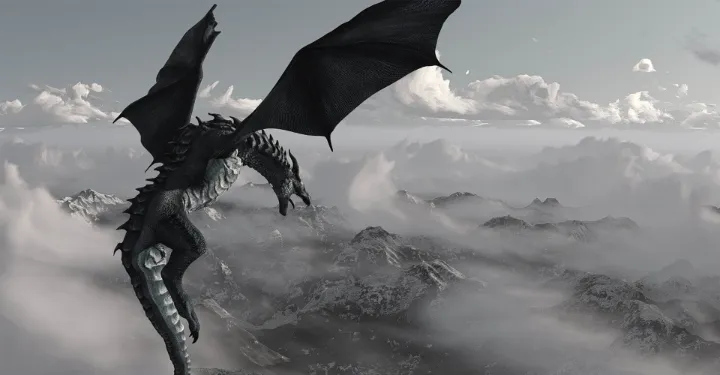
How to Write a Bone-Chilling Dark Fantasy Tale

5 Rules for Writing Your Author Bio (With a Template)
- Book Writing Advice
- All Blog Posts
- Writing Advice
- Academic Writing Advice
- Admissions Writing Advice
- Short Story Advice
- Employment Writing Advice
- Business Writing Advice
- Web Content Advice
- Article Writing Advice
- Magazine Writing Advice
- Grammar Advice
- Dialect Advice
- Editing Advice
- Freelance Advice
- Legal Writing Advice
- Poetry Advice
- Graphic Design Advice
- Logo Design Advice
- Translation Advice
- Blog Reviews
- Short Story Award Winners
- Scholarship Winners

Professional book editing services you can trust

Competitions
The hero’s journey breakdown: ‘star wars’.
By Ken Miyamoto · October 11, 2019
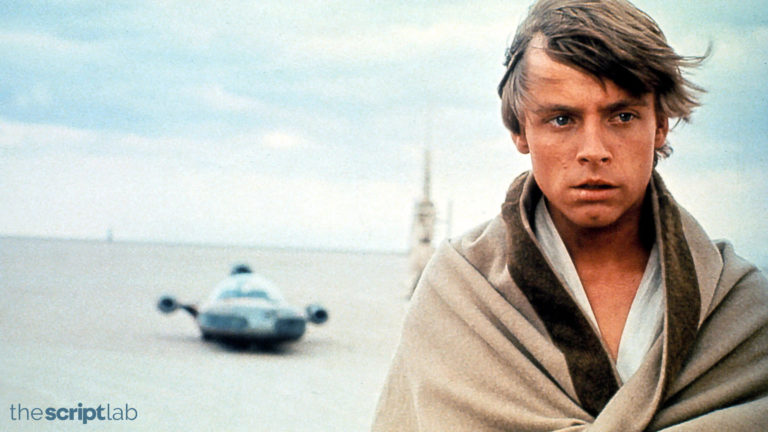
How does Star Wars: A New Hope follow Joseph Campbell’s Hero’s Journey breakdown?
Welcome to the inaugural installment of our new series A Hero’s Journey Breakdown where we explore Joseph Campbell’s mythological storytelling structure and how iconic films fit into that mold.
First up is Star Wars Episode IV: A New Hope . Let’s break down the plot and structure of George Lucas’ 1977 space-opera, the first in what would become an epic franchise spanning nearly 40 years, and see how it fits within The Hero’s Journey. You can download the script below to follow along.
But before we do that, let’s make sure we have the basics down, including what the Hero’s Journey is, where it originated, and who created it.
The Hero’s Journey 101
The “hero’s journey” is a common narrative archetype that features the different stages of a protagonist’s journey in a story. It has been studied and analyzed by many scholars from a multitude of disciplines, but one interpretation has found its way into the minds of almost every writer studying the craft.
The Monomyth
In 1949, writer and professor of literature Joseph Campbell wrote one of the most influential works in storytelling, The Hero with a Thousand Faces, in which he theorizes that stories often share a basic structure. Dubbed the “monomyth” or “the hero’s adventure,” Campbell lays out 17 stages of this narrative archetype, from but some have crafted their own interpretations and renditions that the writing community has used as guides in their own work.
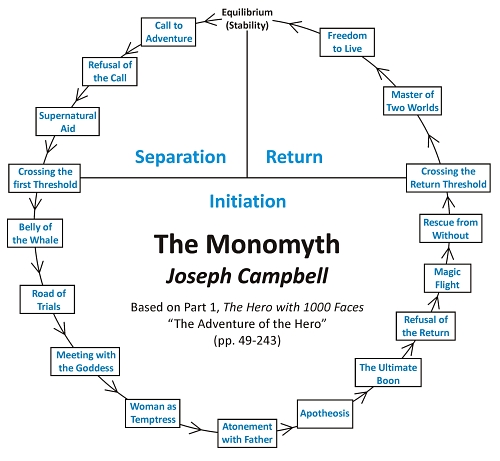
Joseph Campbell’s Monomyth
Vogler: The Writer’s Journey
Christopher Vogler’s approach to Campbell’s structure broke the mythical story structure into 12 stages. For this series, we define the stages in simplified interpretations:
- The Ordinary World : We see the hero’s normal life at the start of the story before the adventure begins.
- Call to Adventure : The hero is faced with an event, conflict, problem, or challenge that makes them begin their adventure.
- Refusal of the Call : The hero initially refuses the adventure because of hesitation, fears, insecurity, or any other number of issues.
- Meeting the Mentor : The hero encounters a mentor that can give them advice, wisdom, information, or items that ready them for the journey ahead.
- Crossing the Threshold : The hero leaves their ordinary world for the first time and crosses the threshold into adventure.
- Tests, Allies, and Enemies : The hero learns the rules of the new world and endures tests, meets friends, and comes face-to-face with enemies.
- The Approach : The initial plan to take on the central conflict begins, but setbacks occur that cause the hero to try a new approach or adopt new ideas.
- The Ordeal: Things go wrong and added conflict is introduced. The hero experiences more difficult hurdles and obstacles, some of which may lead to a life crisis.
- The Reward : After surviving The Ordeal, the hero seizes the sword — a reward that they’ve earned that allows them to take on the biggest conflict. It may be a physical item or piece of knowledge or wisdom that will help them persevere.
- The Road Back : The hero sees the light at the end of the tunnel, but they are about to face even more tests and challenges.
- The Resurrection : The climax. The hero faces a final test, using everything they have learned to take on the conflict once and for all.
- The Return : The hero brings their knowledge or the “elixir” back to the ordinary world.
Breaking Down the Journey: A New Hope
Here we turn to George Lucas’s Star Wars Episode IV: A New Hope .
Note: As with any application of story structure or formula, this is just a hindsight interpretation and implementation of The Hero’s Journey to this cinematic tale. There can and will be variances.
The Ordinary World
Luke Skywalker is living a normal and humble life as a farm boy on his home planet of Tatooine.
Call to Adventure
Luke is called to his adventure by two individuals — R2-D2 and Ben Kenobi. Luke triggers R2-D2’s message from Princess Leia and is intrigued by her and the message.
When R2-D2 escapes to find Ben Kenobi, Luke follows and is later saved by Kenobi, who goes on to tell Luke about his Jedi heritage. Kenobi suggests that he should come with him to Alderaan.
Refusal of the Call
Luke refuses Kenobi, telling him that he can take Kenobi and the droids as far as Mos Eisley Spaceport — but he can’t possibly leave his Aunt and Uncle behind for some space adventure.
Crossing the Threshold
When Luke discovers that the stormtroopers searching for the droids would track them to his farm, he rushes to warn his Aunt and Uncle, only to discover them dead by the hands of the Empire.
When Luke returns to Kenobi, he pledges to go with him to Alderaan and learn the ways of the Force like his father before him.
Tests, Allies, and Enemies
After Luke, Kenobi, and the droids hire Han Solo and Chewbacca to transport them off of Tatooine and onto Alderaan, Kenobi begins Luke’s training in the ways of the Force.
Wielding his father’s lightsaber, Kenobi challenges him to block the shots of a small training remote. At first, he can’t do it. But then Kenobi gives him a helmet to wear that has a blast shield that blocks his view of the remote. Kenobi teaches him to reach out and trust his feelings.
Luke blocks three shots from the remote — blind.
The Approach
The plan to defeat the Galactic Empire is to bring the Death Star plans to Alderaan so that Princess Leia’s father can take them to the Rebellion. However, when they arrive within the system, the planet is destroyed. They come across the Death Star and are pulled in by a tractor beam, now trapped within the metaphorical belly of the beast — The Galactic Empire.
As Kenobi goes off to deactivate the tractor beam so they can escape, Luke, Han, and Chewbacca discover that Princess Leia is being held on the Death Star with them. They rescue her and escape to the Millennium Falcon, hoping that Kenobi has successfully deactivated the tractor beam.
Kenobi later sacrifices himself as Luke watches Darth Vader strike him down. Luke must now avenge his fallen mentor and carry on his teachings.
Luke has saved the princess and retrieved the Death Star plans. They now have the knowledge to destroy the Galactic Empire’s greatest weapon once and for all.
The Road Back
Luke, Leia, Han, Chewbacca, and the droids are headed to the hidden Rebellion base with the Death Star plans. They are suddenly pursued by incoming TIE-Fighters, forcing Han and Luke to take action to defend the ship and escape with their lives — and the plans.
When they are triumphant, they realize that the Galactic Empire must be tracking them. But they have no choice but to race against time to take the plans to the Rebellion and prepare for battle.
The Resurrection
The Rebels — along with Luke as an X-Wing pilot — prepare to take on the Death Star.
The Rebellion and the Galactic Empire wage war in an epic space battle. Luke is the only X-Wing pilot that was able to get within the trenches of the Death Star. But Darth Vader and his wingmen are in hot pursuit. Just as Darth Vader is about to destroy Luke, Han returns and clears the way for Luke.
Luke uses the Force to guide his aiming as he fires upon the sole weak point of the deadly Death Star, destroying it for good.
Luke and Han return to the Rebellion base, triumphant, as they receive medals for the heroic journey. There is peace throughout the galaxy — at least for now.
Hopefully now you have a better idea of what the Hero’s Journey looks like in the wild. Be sure to check out our other Hero’s Journey Breakdowns for more examples from cinema’s greatest films.
Scripts from this Article
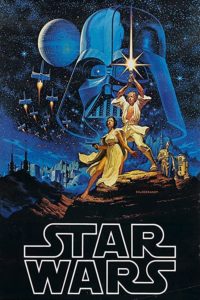
Star Wars: Episode IV – A New Hope
Download free trending scripts.

Breaking Bad

Poor Things

Mr. and Mrs. Smith
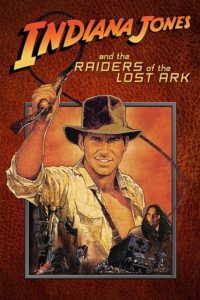
Raiders of the Lost Ark

Stranger Things
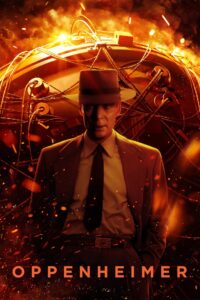
Oppenheimer
Next related article.
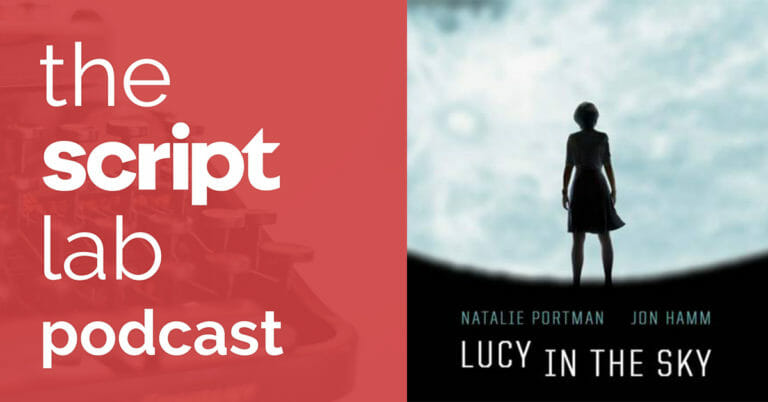
The Script Lab Podcast: Brian C. Brown and Elliott DiGuiseppi — Writers of LUCY IN THE SKY
Shanee Edwards · October 4, 2019
Recent Articles
A brief history of film noir.
Martin Keady · April 17, 2024
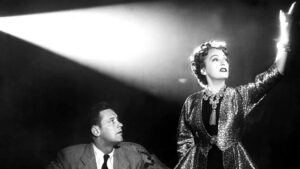
Moving Monologue: The Best Movie Monologues That Leave Audiences Speechless
Ken Miyamoto from ScreenCraft · April 15, 2024
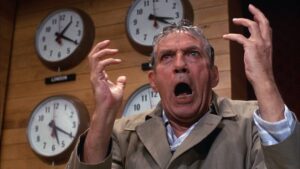
What Is the Wilhelm Scream?
Ken Miyamoto from ScreenCraft · April 10, 2024
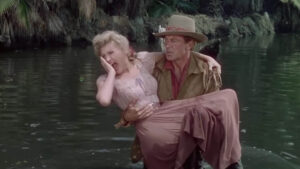
Launch Pad Prose Competition
Deadline: April 20th, 2024

Moonshot Pilot Accelerator
Deadline: April 21st, 2024

Deadline: May 20th, 2024
More Related Articles
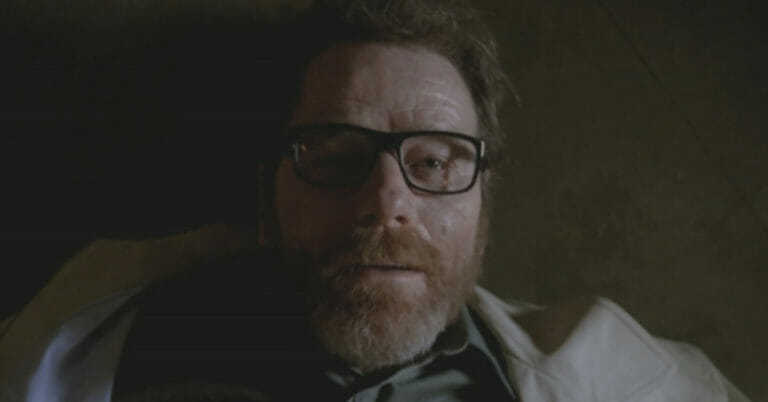
First Ten Pages: Breaking Bad Series Finale – “Felina”
Danielle Karagannis · October 11, 2019
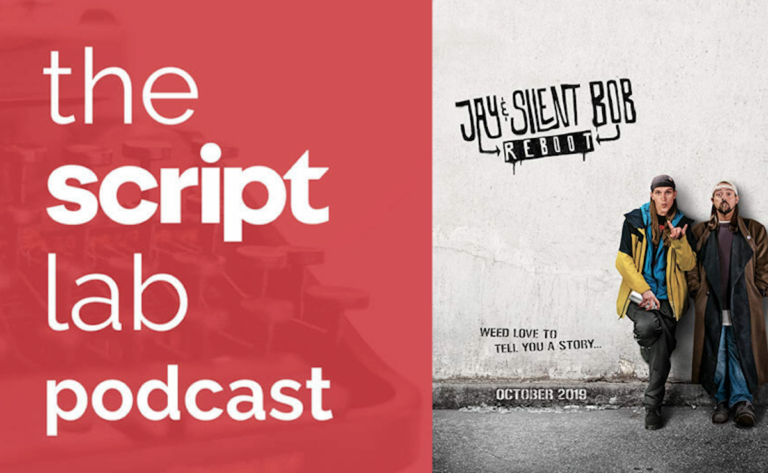
The Script Lab Podcast: Kevin Smith — Writer/Director of JAY AND SILENT BOB REBOOT
Shanee Edwards · October 11, 2019

The Script Lab Podcast: Robyn Paris — Writer/Director of the Award-winning Web Series THE ROOM ACTORS: WHERE ARE THEY NOW?
© 2024 The Script Lab - An Industry Arts Company
Sign up for the TSL Newsletter
and get $50 off Final Draft 12
Stay up to date on the latest scripts & screenwriting articles.

IMAGES
VIDEO
COMMENTS
To put your hero at a disadvantage, remove one of life's most common advantages: A solid set of parents, traditionally one's first allies. Doing this will instill your story with readymade conflict from page one. 3. A Principled but Boring Life. Many elements of the Ordinary World are obvious.
The 12 hero's journey stages represent a change or transformation in your story's main character or hero. Get a free hero's journey template. ... Stage 1: The Ordinary World. Your hero starts out in the ordinary world. He or she is just like every other person in their environment, doing things that are normal for them and experiencing the same ...
The Return: The hero brings their knowledge or the "elixir" back to the ordinary world. The first stage — The Ordinary World — happens to be one of the most essential elements of any story, even ones that don't follow the twelve-stage structure to a tee. Here we offer three reasons why writers need to show protagonists in their Ordinary World.
The Hero's Journey is probably the most well-known of all story structures. Its origins can be traced back to ancient mythology, where heroes embarked on transformative quests, facing trials and triumphs. However, it was Joseph Campbell, the renowned mythologist, who popularised its use and study. In his seminal work, "The Hero with a ...
We define the stages in our own simplified interpretations: 1. The Ordinary World: We see the hero's normal life at the start of the story before the adventure begins. 4 2. Call to Adventure: The hero is faced with an event, conflict, problem, or challenge that makes them begin their adventure. 3.
The Hero's Journey is a model for both plot points and character development: as the Hero traverses the world, they'll undergo inner and outer transformation at each stage of the journey. The 12 steps of the hero's journey are: The Ordinary World. We meet our hero. Call to Adventure. Will they meet the challenge? Refusal of the Call.
That brings us to the different stages The Hero's Journey is divided into: The Ordinary World. The Call to Adventure. Refusal of the Call. Meeting with the Mentor. Crossing the Threshold to the Special World. Tests, Allies and Enemies. Approach to the Innermost Cave. The Ordeal.
Learn about each of the 12 steps of The Hero's Journey, or monomyth, in detail from an award-winning YA author. The Hero's Journey is a famous story structur...
The ordinary world generally conjures a mood, image, or metaphor that suggests a theme and gives the reader a frame of reference for the rest of the story. The mythological approach to story boils down to using metaphors or comparisons to convey the hero's feelings about life. The ordinary world is sometimes set in a prologue and often strains ...
The Ordinary World: This stage establishes the protagonist's normal life before their adventure begins. It provides important context and allows the audience to become familiar with the hero's circumstances, values, and motivations. ... In addition to the 12 stages, the Hero's Journey also features several key archetypes that frequently appear ...
The 12 Stages of the Hero's Journey (as outlined by Christopher Vogler) While Joseph Campbell originally outlined 17 stages of the monomyth in his book, screenwriter Christopher Vogler simplified it into 12 stages in a popular guidebook for writers. Known as the hero's journey model, these 12 steps are: Ordinary World. Call to Adventure.
The Twelve Stages of the Hero's Journey. Each of the twelve steps has its own story beats that happen. As we finish each stage, we'll reflect on each story beat with an example from a famous movie. 1. The Ordinary World. The first step in the Hero's Journey is your chance to familiarize the reader with the known world in which your story ...
The Ordinary World: The start of the Hero's Journey finds us in the Ordinary World, where readers are introduced to your setting, meet the starting cast, and get to know your protagonist. Essentially, the Ordinary World provides a baseline that will make the Unknown World your protagonist later encounters stand out.
At this point in the hero's journey, the hero has left the ordinary world and achieved their objective in the world of adventure. Now, the story has to wrap up. Campbell noticed that stories following the monomythic cycle can go different directions here, and modern storytelling has taken up the theme as well, suggesting that the following ...
The 3 Hero's Journey Stages. 1. The Departure (Separation) The hero is compelled to leave her ordinary world. She may have misgivings about this compulsion, and this is where a mentor may come to encourage and guide her. Example: Katniss Everdeen is a devoted sister, daughter, and friend.
The stages of the hero's journey are outlined in Joseph Campbell's classic The Hero With a Thousand Faces. ... Ordinary World . 2. Call to Adventure . 3. Refusal of the Call . 4. Meeting with the Mentor . 5. Crossing the First Threshold . 6. Tests, Allies, Enemies . 7. Approach to the Inmost Cave
The first stage — The Ordinary World — happens to be one of the most essential elements of any story, even ones that don't follow the twelve-stage structure to a tee. ... The first documentary, 1987's The Hero's Journey: The World of Joseph Campbell, was released with an accompanying book entitled The Hero's Journey: Joseph Campbell on His ...
The hero's journey is the story of a hero who leaves the ordinary world to go on an adventure full of peril. On it, the hero will gain both adversaries and allies, and will face a great evil. The hero will also face his shadow self, which is perhaps the most frightening antagonist of all. Campbell references 17 total steps in the hero's journey.
In the departure part of the narrative, the hero or protagonist lives in the ordinary world and receives a call to go on an adventure. The hero is reluctant to follow the call but is helped by a mentor figure. The initiation section begins with the hero then traversing the threshold to an unknown or "special world", where he faces tasks or trials, either alone or with the assistance of helpers.
Christopher Vogler's approach to Campbell's structure broke the mythical story structure into twelve stages. For this series, we define the stages in simplified interpretations: The Ordinary World: We see the hero's normal life at the start of the story before the adventure begins.
The Steps of the Hero's Journey . 1. The Ordinary World. 2. The Call of Adventure . 3. Refusal of the Call. 4. Meeting the Mentor. 5. Crossing the First Threshold. 6. Tests, Allies, and Enemies. 7. Approach to the Innermost Cave ... This is one of the OG stages from Joseph Campbell, and Goblin Town is the perfect representation.
The "hero's journey" is a common narrative archetype that features the different stages of a protagonist's journey in a story. It has been studied and analyzed by many scholars from a multitude of disciplines, but one interpretation has found its way into the minds of almost every writer studying the craft. ... The Ordinary World: We ...